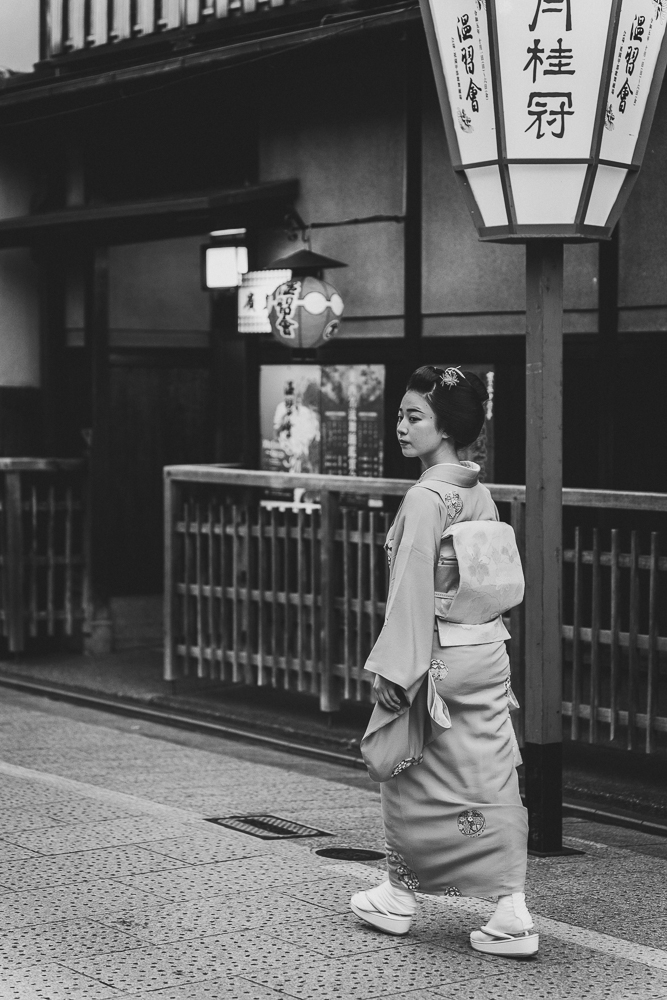Kyoto is, undoubtedly, one of the highlights of any trip to Japan. Once the capital for more than 1000 years, Kyoto remains the center of traditional Japanese culture and one of the largest cities in the country.
*This post may contain affiliate links, as a result, we may receive a small commission (at no extra cost to you) on any bookings/purchases you make through the links in this post. As an Amazon Associate, we earn from qualifying purchases. Read our full disclosure
Kyoto attracts millions of visitors annually, and it’s not hard to see why, as it’s easily one of the most beautiful Japanese cities.
The city is famous for its Buddhist temples, imperial palaces, Shinto shrines, traditional wood houses, kaiseki dining and geisha entertainers. It’s also home to 17 UNESCO World Heritage Sites, including the Golden Pavilion and the Tenryu-ji Zen temple near the famous bamboo forest.

Traveling Soon? Here is a list of our favourite travel providers and accessories to help get you ready for your upcoming trip!

We visited Kyoto for four days as part of our Japan trip, and fell in love with this traditional city. We jam-packed our itinerary with stops at main sites and attractions and made the most of our visit. While we absolutely recommend spending more than a few days in Kyoto, we recognize that many travelers are short on time and want to squeeze in the best of Kyoto into a short 2 day visit.
If this sounds like you, read on to discover our suggested Kyoto 2-day itinerary, which covers all the best attractions, activities and must-see districts!
So, let’s dive in!
How to Get to Kyoto
Located southwest of Tokyo, Kyoto is relatively easy to reach either by air or by land. The most convenient option to reach Kyoto is by plane or by train.
As sustainable travellers, we always encourage ways to reduce your carbon footprint, so we strongly recommend opting for a slower, more scenic route by train.
By Air
The closest airport to Kyoto is Itami Airport (Osaka International Airport) in Osaka, which is located about one hour by bus from downtown Kyoto. Multiple daily flights connect Itami Airport with Tokyo’s Haneda Airport, with the flight time taking about an hour.
Another option is to arrive at Kansai International Airport, which offers daily international and domestic connections. Note that Kansai Airport is located over an hour from Kyoto, which makes for a long journey if travelling from Tokyo.
The JR Haruka Limited Express train from Kansai Airport can take you to Kyoto train station in 70 minutes.
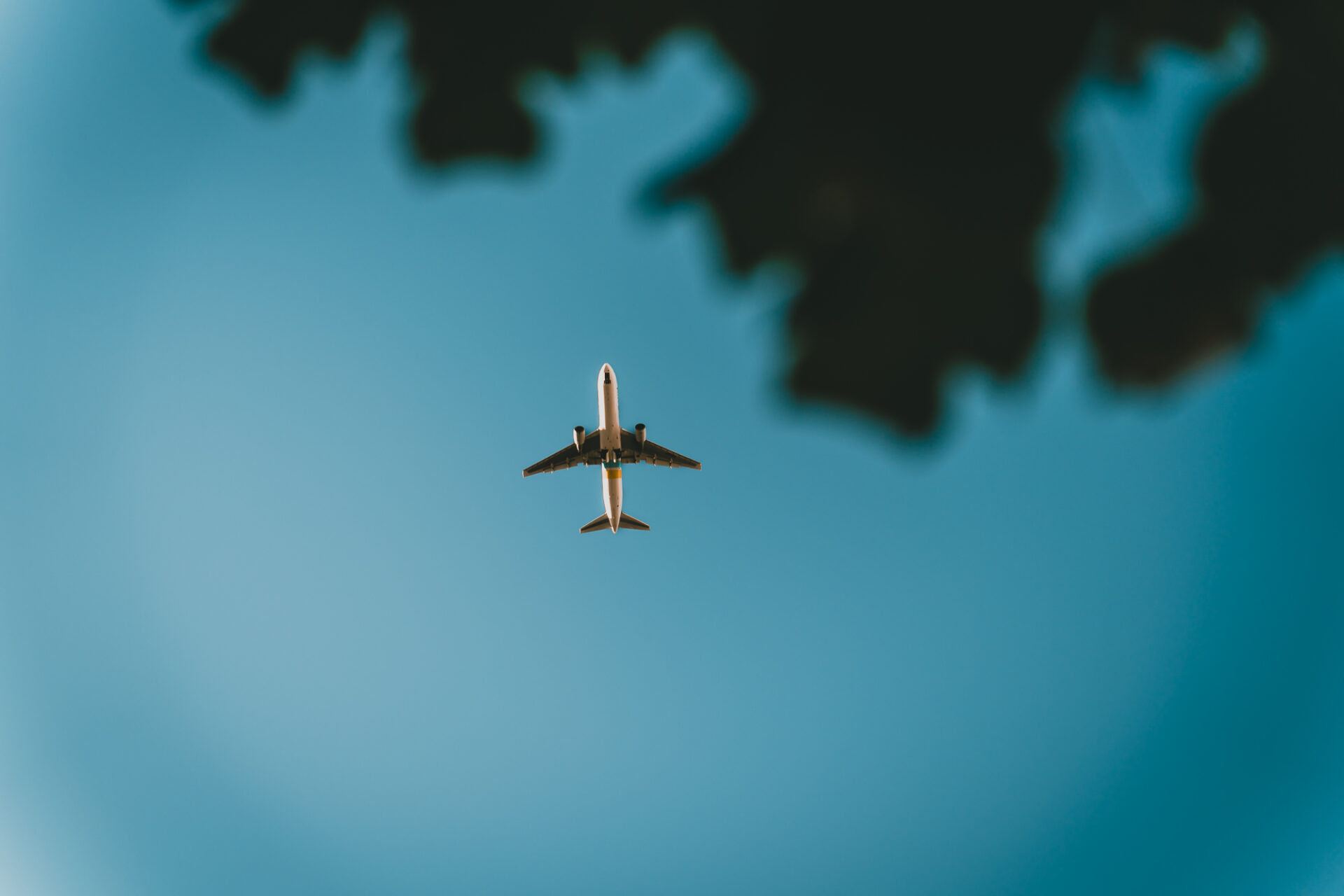
By Train
The train is actually the most efficient option for travelling to Kyoto if you’re already in Japan. The Tōkaidō Shinkansen bullet train connects Tokyo and Kyoto on a direct route. There are three services on this line departing regularly: Nozomi, Hikari, and Kodama; the travel time and cost vary by service.
Nozomi bound service offers the quickest option, taking around 140 minutes for the journey and costing just over 14,000 Yen. You can board any Tōkaidō Shinkansen service at Tokyo Station, Shinagawa Station, or Shin-Yokohama Train Station.
Arriving at Kyoto Train station is a breeze. The Station is located right in the centre of the city, making it easy to get to your accommodation by subway or taxi/Uber upon arrival.
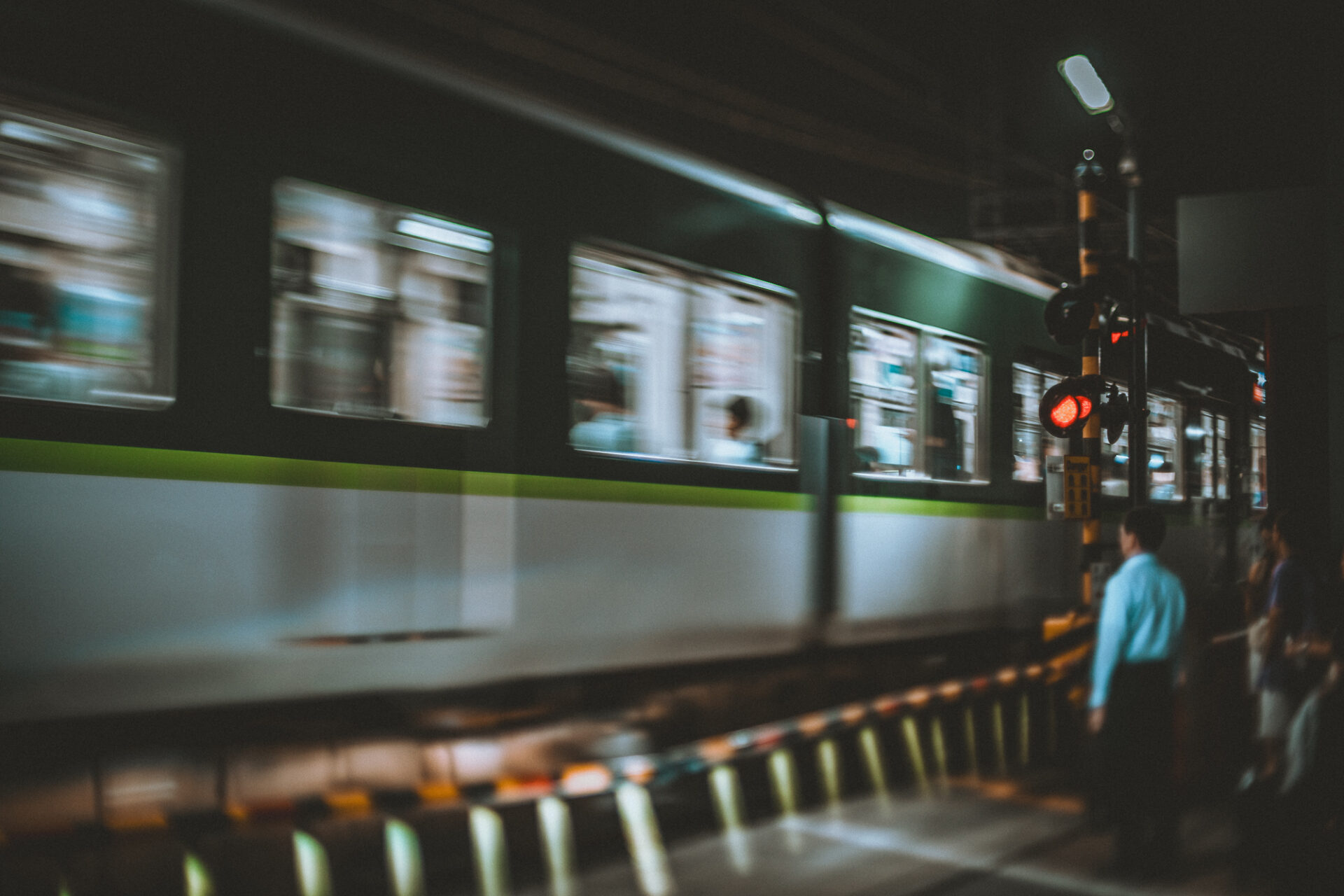
How to Get Around Kyoto
There are many ways to get around Kyoto. With trains, subways, buses, taxis, ride-share services and even by bicycle or walking options, it’s a city that’s easy to navigate.
Many sights in Kyoto are located in the central part of town, so reducing your carbon footprint and getting your steps in by walking between your destinations is easy. We easily clocked in upwards of 20,000 steps while exploring Kyoto.
Kyoto City Subway, JR Lines, and busses offer a great alternative to walking in Kyoto. Fares are usually $1-$3 per trip and can be paid via IC cards such as the Kansai One Pass. You can also purchase a multiple-day Japan Rail Pass to save money on JR Lines.
Best Time to Visit Kyoto
Thanks to good weather, sakura (cherry blossom) and fall colours make Spring and Fall the busiest seasons in Kyoto. But the truth is, there are perks and downsides to any season.
Spring
Spring is often considered the best time of year to visit Kyoto, mostly because it’s also cherry blossom season. The weather is quite mild in spring, and walking around and exploring the city on foot is comfortable. You can expect temperatures to be in the mid-60s °F (18 °C) during the day, dropping to around 45 °F (7 °C) at night.
The downside of cherry blossom season is that prices increase, and you can expect a busy crowd of visitors at most attractions.
Summer
The temperatures rise pretty quickly come June, and the humidity also arrives as the wet season peaks in Japan. Daytime temperatures range from the low 80s °F (28 °C) to the low 90s °F (32 °C), with an average of 5 to 8 inches of precipitation per month in summer.
Summer brings many downpours and sweltering temperatures. This weather can make it uncomfortable to move around the city, but it does mean there are far fewer crowds and cheaper accommodations.
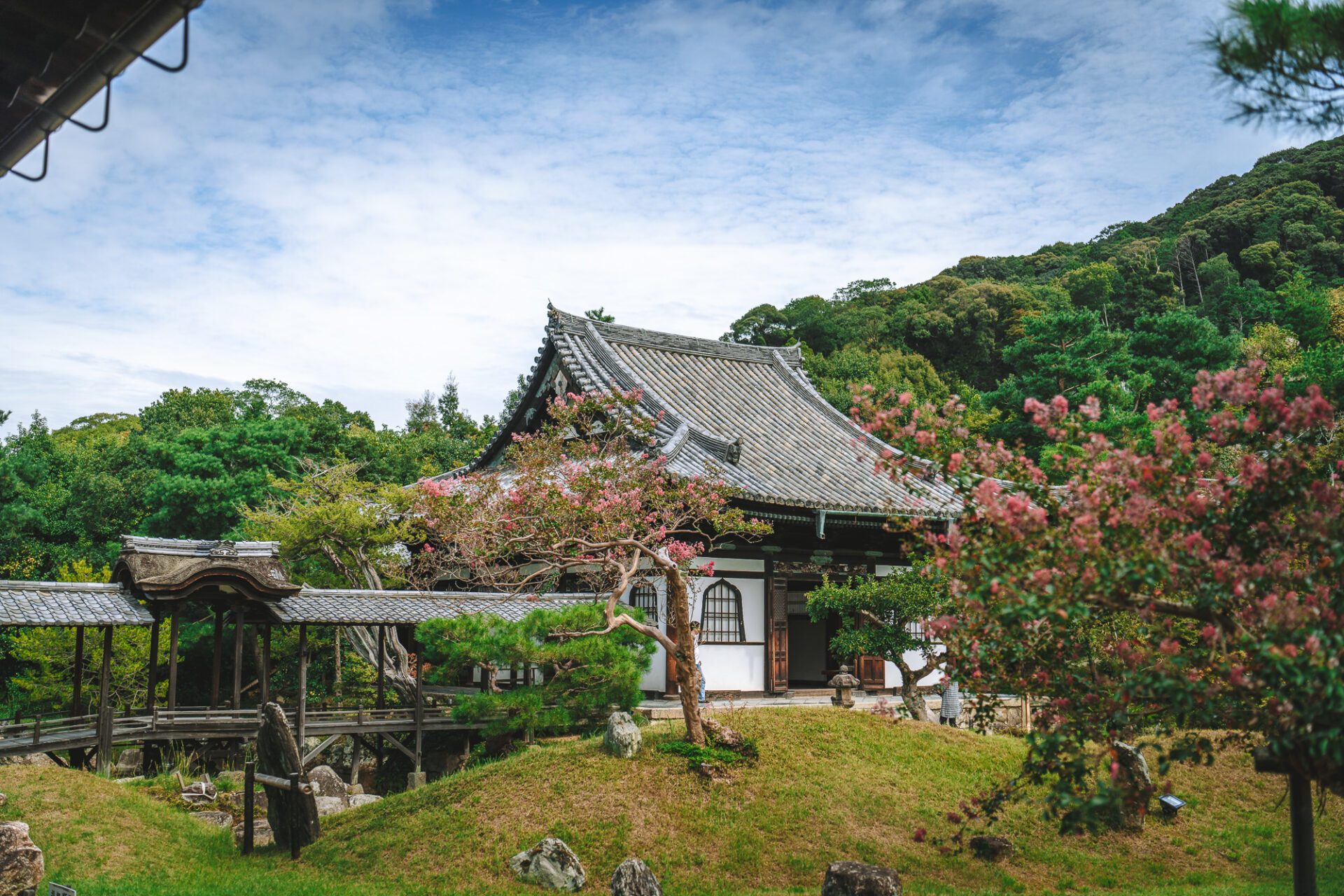
Fall
Many agree that Fall is the next best time to visit Kyoto. The temperatures fall after September, and the rain subsides around October, making it a pleasant time to enjoy the outdoors.
Fall foliage is stunning around Kyoto and also tends to attract a fair share of crowds. The daytime temperatures are a more comfortable 70°F (21°C), with night temps dropping to 55 F (12 C).
Winter
Winter gets chilly with freezing temperatures. But that means that it’s generally the quietest time to visit Kyoto. You can expect to have plenty of places to yourself and often with a pretty dusting of snow.
Daytime temperatures sit around 50°F (10°C), while at night, they can drop to 32 °F (0 °C) in peak winter in January. You’ll want to pack warm clothing, especially if you plan on doing a walking tour of the city.
2-Day Kyoto Itinerary
We have to admit that while this itinerary does pack a punch, 2 days in Kyoto is not enough time. We spent 5 days in the city, and it still felt quite rushed as we covered a lot of ground from morning until evening.
Think of this Kyoto itinerary as a start and consider adding a few days to it, if possible. If you can’t, be prepared to walk around 9-12 miles (15-20 km) daily or fork out for a few taxis to get around quickly.
Day 0: Arrive and check into Seikoro Ryokan
Arrive in Kyoto and check into Seikoro Ryokan. A ryokan is a traditional Japanese inn where you can experience authentic Japanese culture. A stay in a ryokan is a must when visiting Kyoto, and Seikoro Ryokan is one of the best, offering a great introduction to the city. Forget about a typical hotel room. This stay is all about slippers, yukata robes, green tea, onsens (hot springs), and kaiseki cuisine.
Seikoro Ryokan was established in 1831 and is an unpretentious 4-star boutique ryokan near the Kamo River in central Kyoto. Built-in traditional style with wood panels, screen doors, a leafy courtyard, a landscape rock garden, chabudai dining tables, and an onsen with artificial hot spring water, this ryokan offers excellent service and is guaranteed to be a highlight of your stay.
That evening, don your yukata robe and dive straight into traditional Japanese culture with a kaiseki dinner included in your stay. The meal will be served in the privacy of your own room, so it’s a great relaxing activity to book on your arrival day. Enjoy a traditional multi-course meal with lots of appetizers and small dishes showcasing Japanese delicacies, including plenty of seafood.
After dinner, relax at the on-site onsen. You can soak in the perfect temperature of the large wooded bathtub to relax and get ready for some sightseeing the following day.

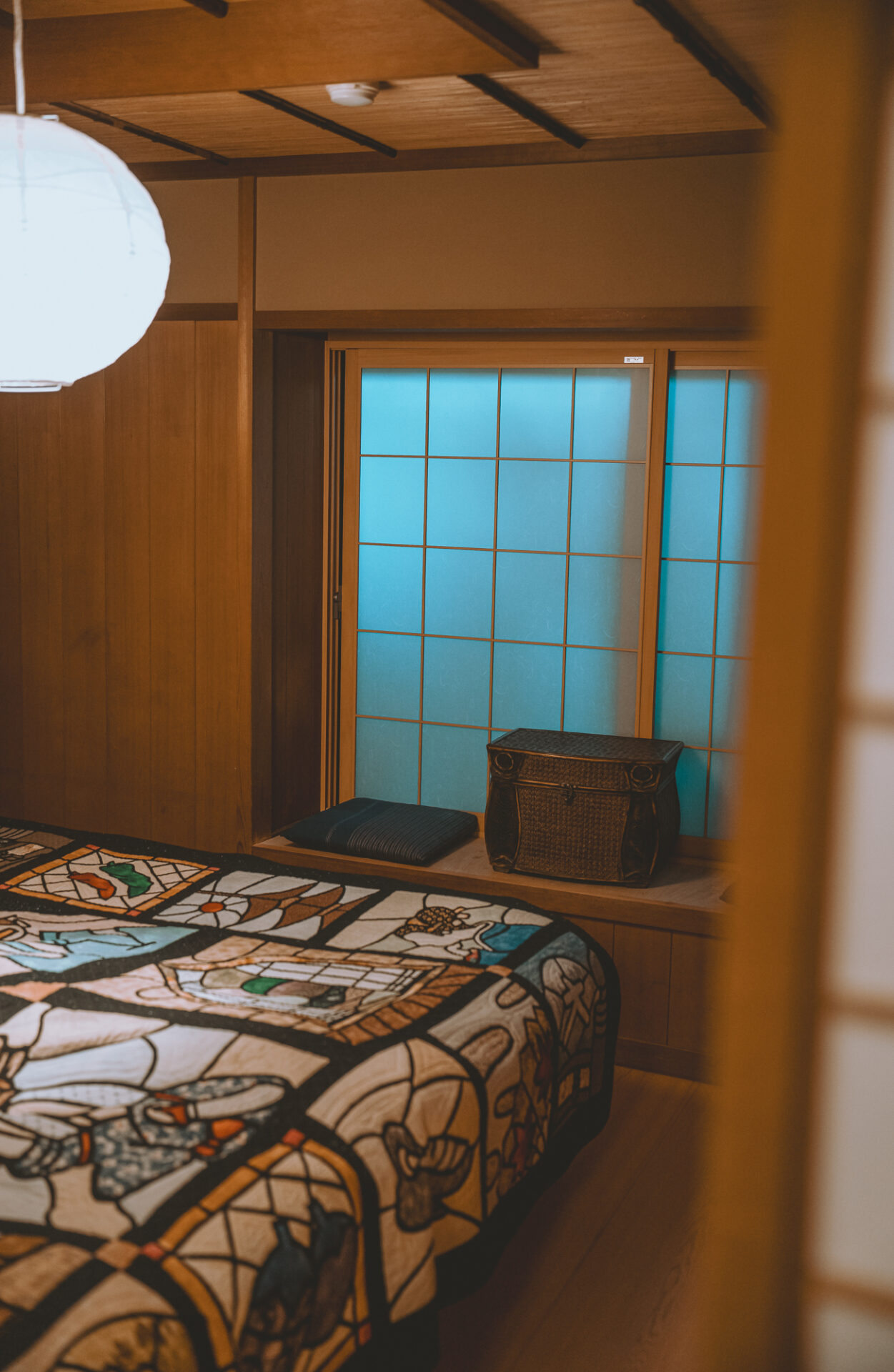
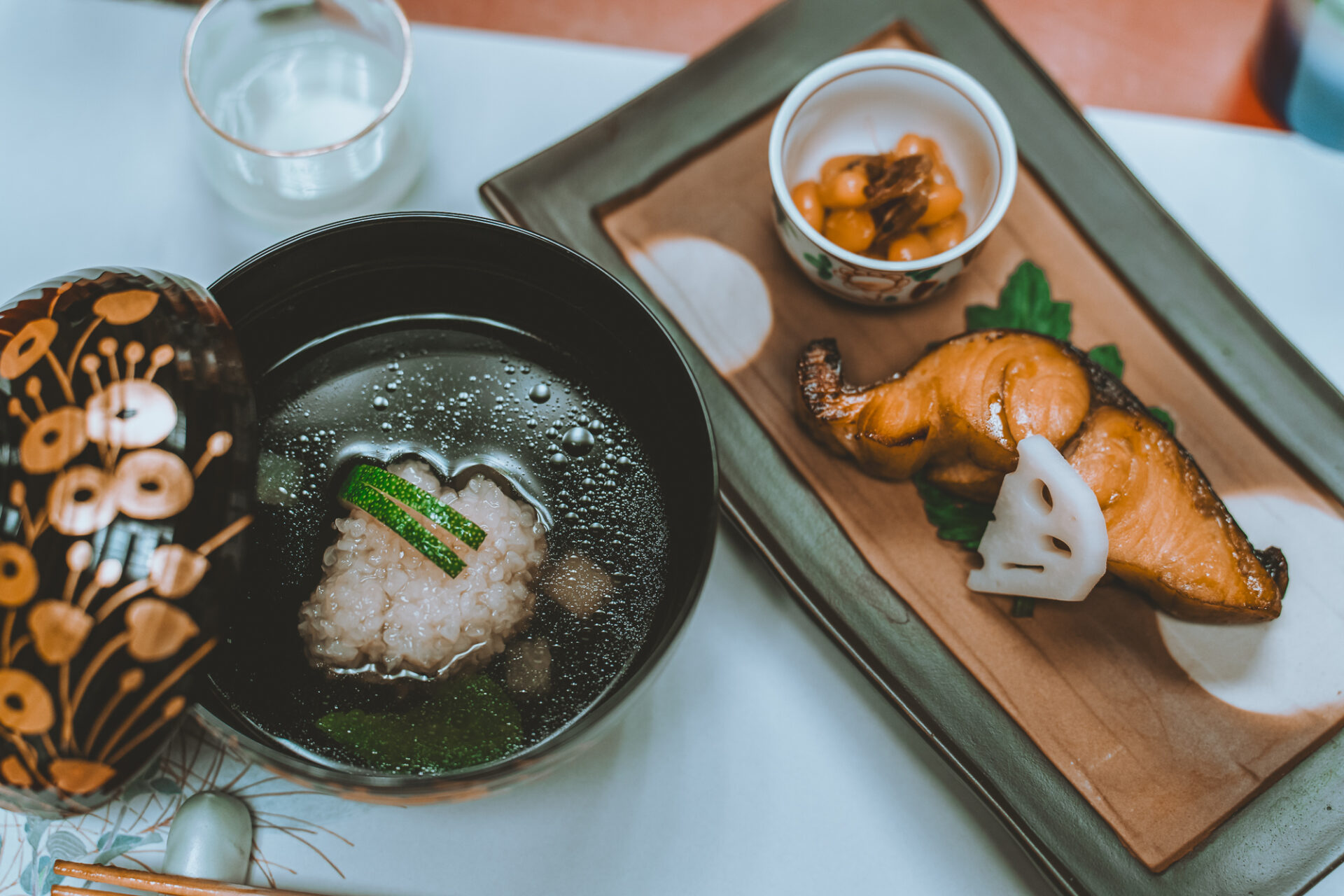
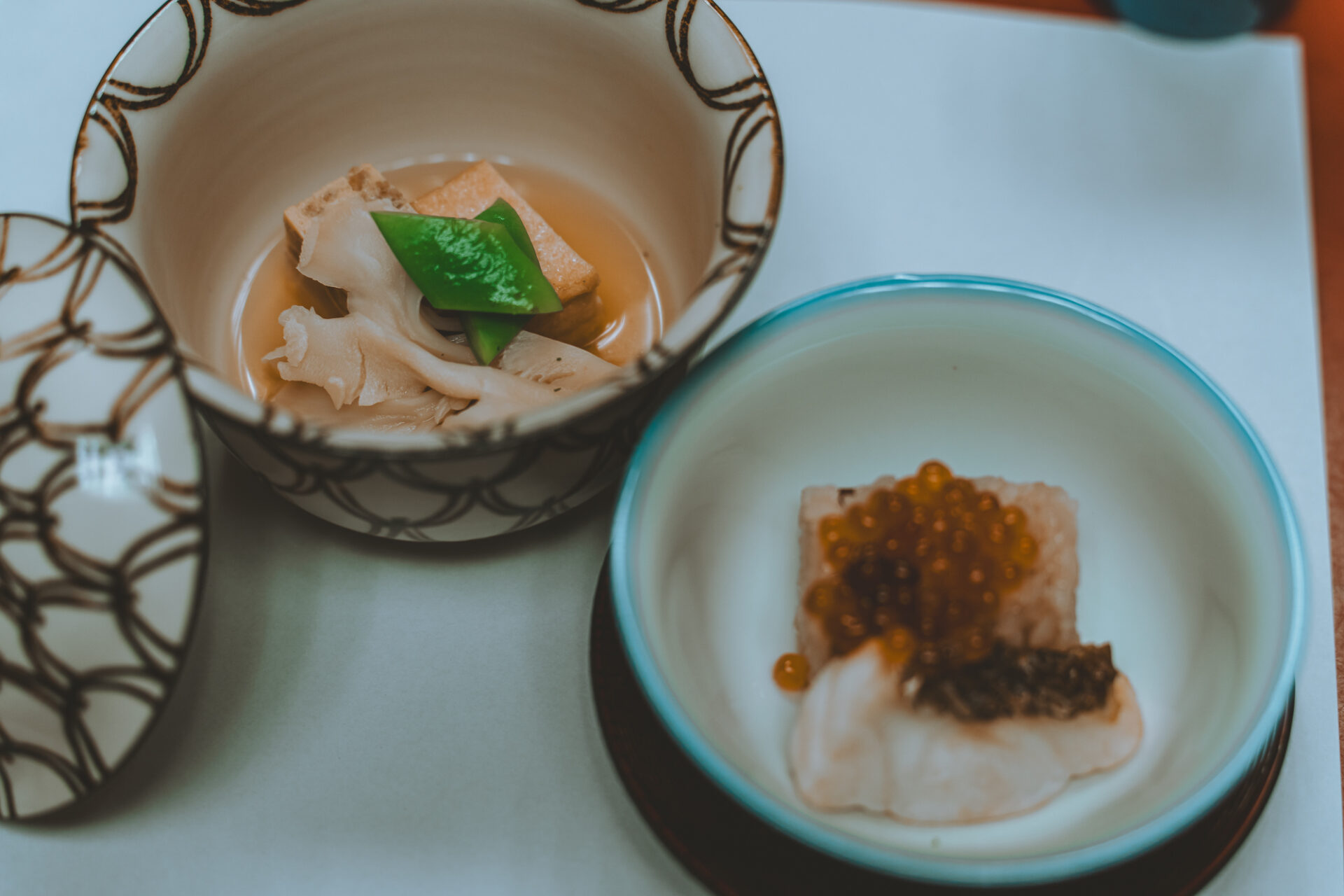
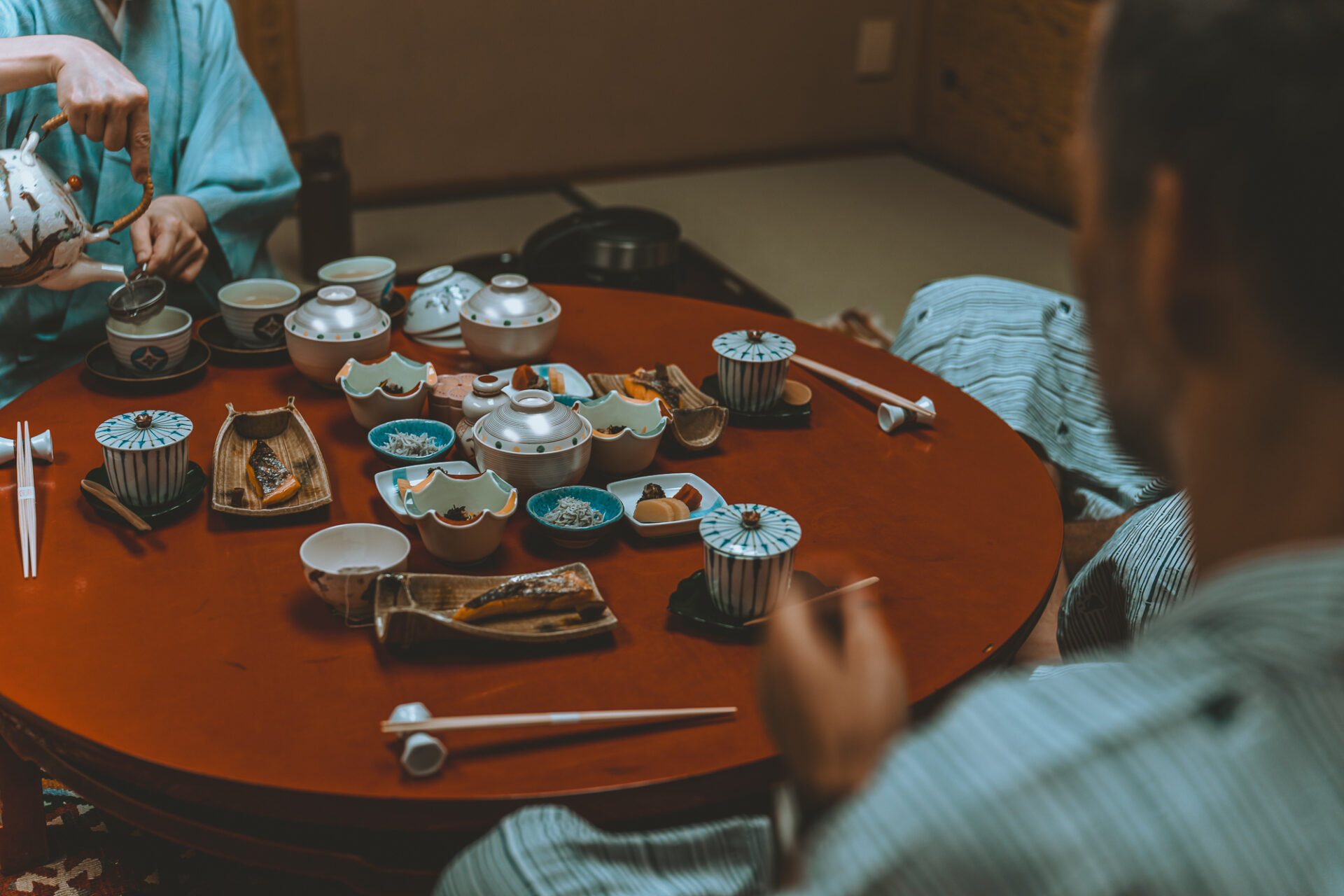
Day 1: Temples, Teahouses, and Geishas
Start your day with breakfast at Seikoro Ryokan (also included in your stay). Choose between a traditional Japanese or more Western-style breakfast and fuel up for the day ahead.
Morning: Explore Higashiyama District
Located on the eastern side of the city, Higashiyama District is one of the best-preserved historic districts of Kyoto, taking you back to the feudal era with traditional Japanese architecture. Filled with narrow streets, wooden buildings, traditional pottery shops, tea houses, and plenty of temples and shrines, it’s the perfect place to experience old Kyoto.
Mornings tend to be less busy, so head there shortly after breakfast to beat the mid-day crowds. Explore the narrow alleyways, especially between Kiyomizudera and Yasaka Shrine, popping into traditional merchant shops selling local crafts and souvenirs.
Then, visit some of the famous temples and shrines in the district. We recommend checking out:
- Kodai-ji Temple: This serene Buddhist temple, Kodai-ji, was constructed in 1605 in memory of Toyotomi Hideyoshi. The temple grounds feature temple halls, landscape gardens, teahouses and a bamboo grove.
- Yasaka Shrine: Famous for its hanging lanterns, this shrine hosts the famous Gion Matsuri Festival held every year in July. It’s located next to Maruyama Park, which is the most popular park in the city for cherry blossoms.
- Kiyomizu-dera Temple: One of Japan’s most popular Buddhist temples will be busy any time of the day, so be prepared to brave the crowds. Sitting perched on Mount Otowa east of the city, it features scenic views from its balcony over the city.
There are plenty of restaurants in the area to grab lunch and give your feet a break.

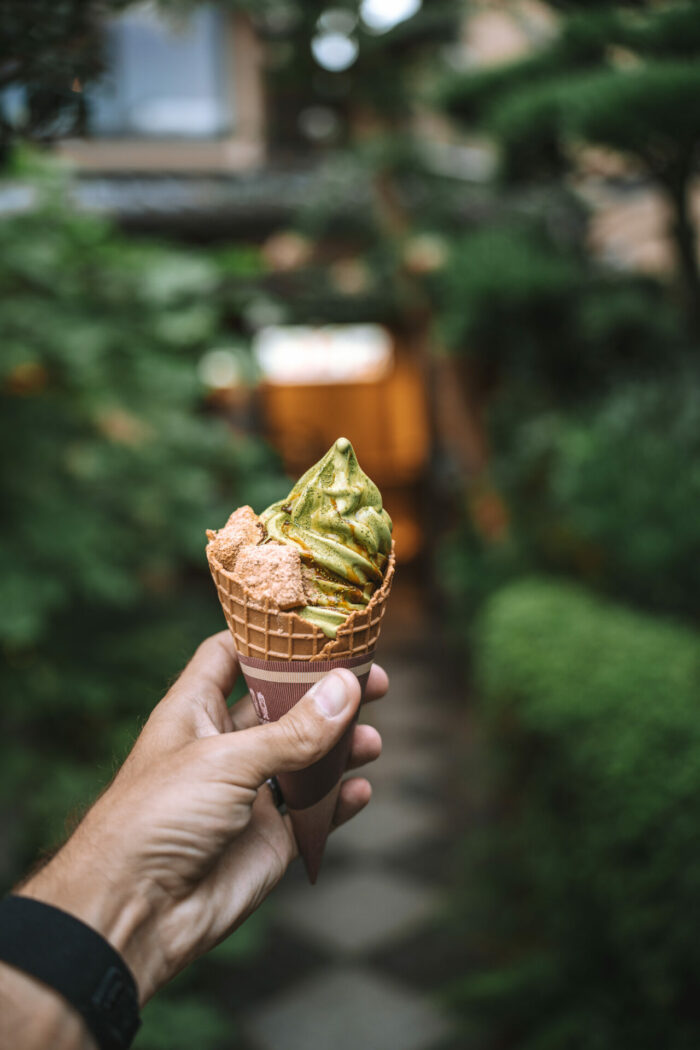

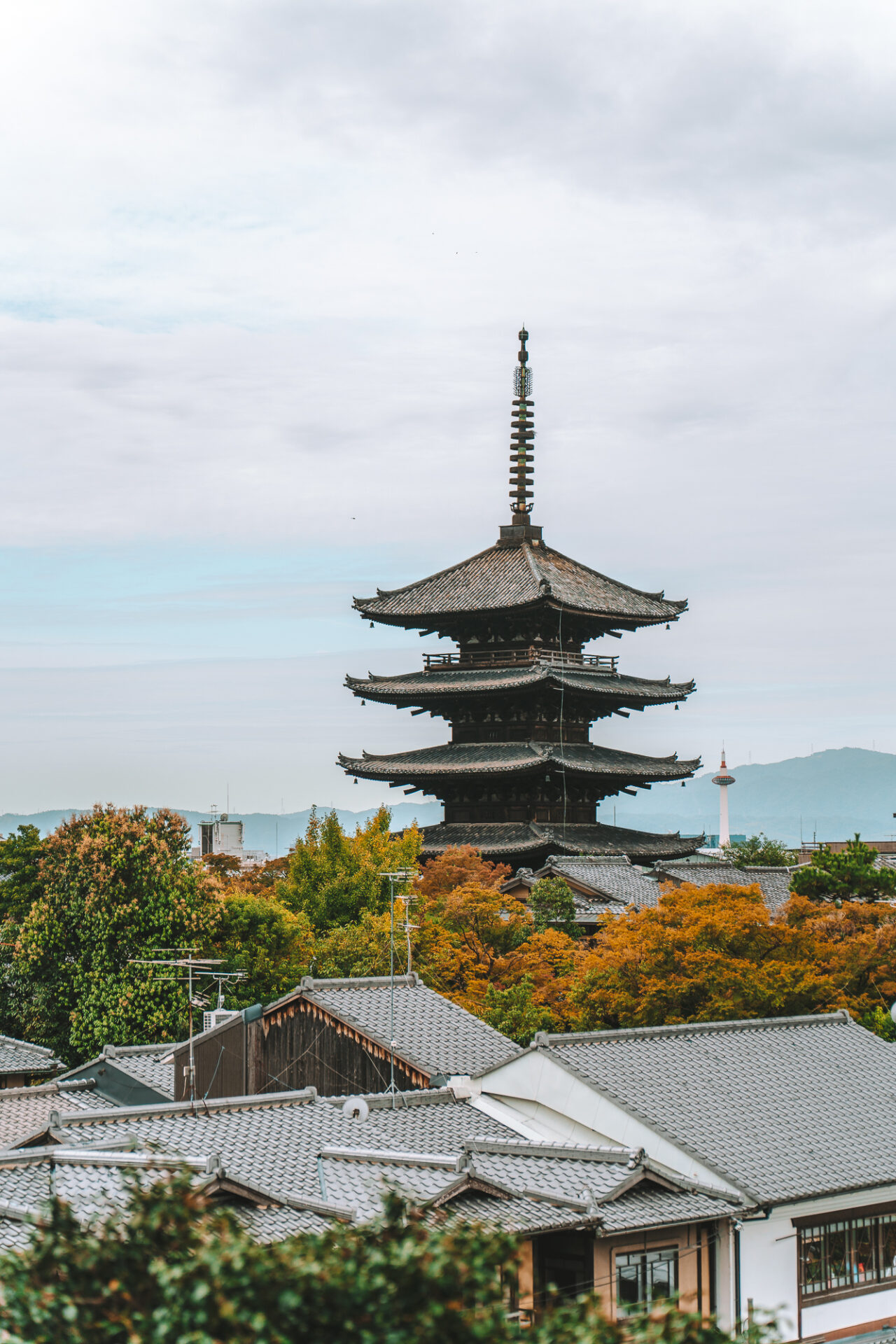

Afternoon: Explore Gion District
As Kyoto’s most famous geisha district, Gion is a must-visit on any Kyoto itinerary. Located between Yasaka Shrine and Kamo River, this area is filled with shops, restaurants and teahouses, where geiko (local dialect for geisha) and maiko (geiko apprentices) entertain during a traditional tea ceremony.
The main street of Gion is Hanami-koji Street, which runs from Shijo Avenue to Kenninji Temple. This street is filled with well-preserved machiya houses, which now function as restaurants, serving Kyoto-style kaiseki ryori (traditional Japanese cuisine) and other types of local and international meals. Stroll through the area at sunset and see if you can catch a glimpse of a geisha in the streets.
If dinner with geisha entertainment is on your bucket list, be sure to book in advance. “Dinner and a Show” packages start at $100/person.
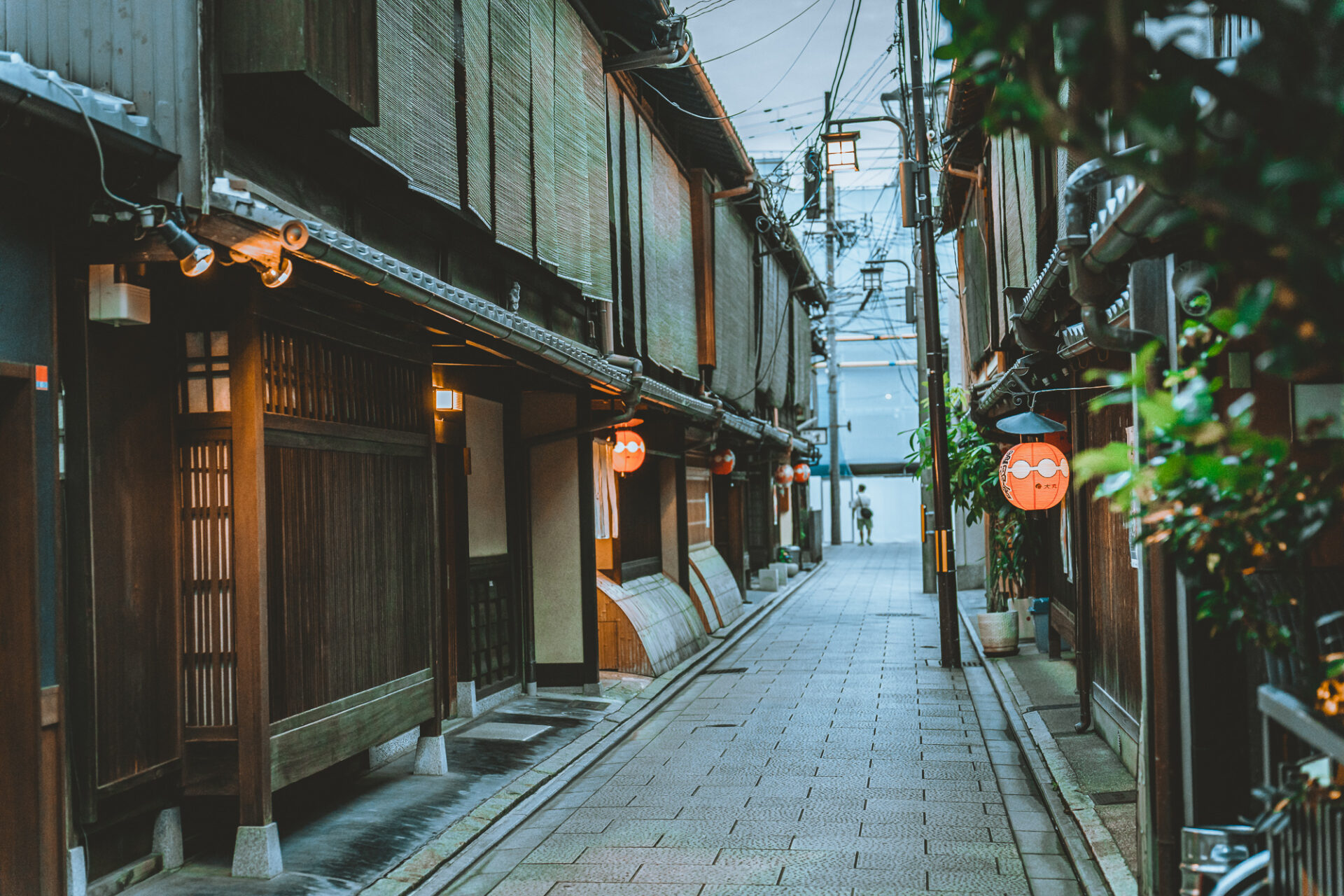

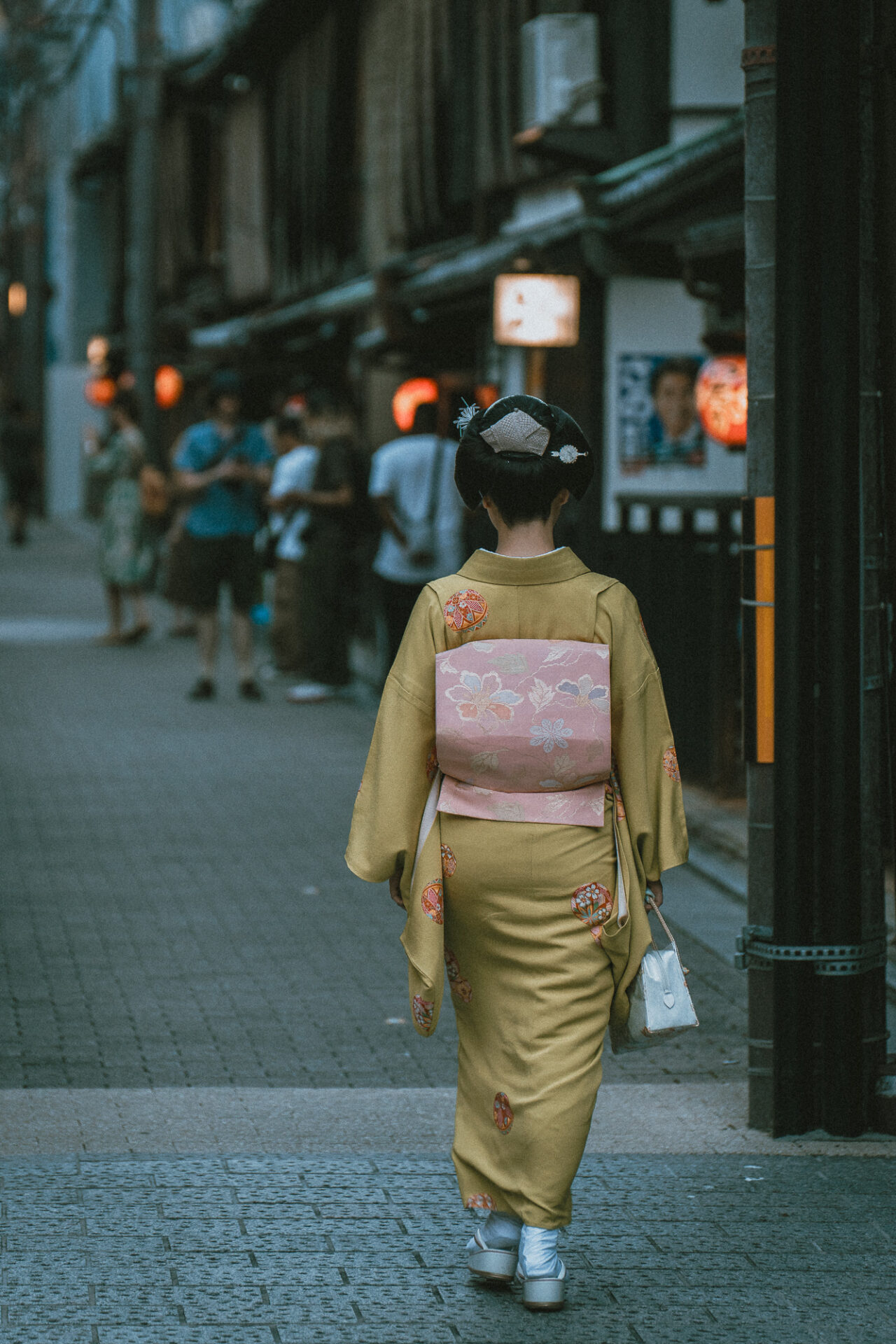
Evening: Downtown Kyoto
Alternatively, head across to the west side of the river to Pontocho Alley, which runs parallel to the river. This atmospheric street is lined with traditional shops and restaurants, making for a very traditional Japanese experience.
Pontocho Alley comes to life at night with dozens of small restaurants opening their doors for dinner service only. You can pick from a number of dinner options, including Yasubee for okonomiyaki, Ukiya for soba noodles, or Yamafuku for a traditional tatami room and hot pot, to name a few.
Day 2: Palaces, Bamboo Grove and Views
Get up early and head to Nishiki Market for breakfast. This 400-year-old iconic market in downtown Kyoto is one of the highlights of any Kyoto trip.
The market is a narrow strip lined with over a hundred shops and stalls specializing in all things related to food and local produce.
You can try Kyoto specialties, such as Japanese sweets, pickles, fresh seafood and sushi. Grab snack-size bites from a variety of food stalls and fuel yourself for another big day of your Kyoto Itinerary.
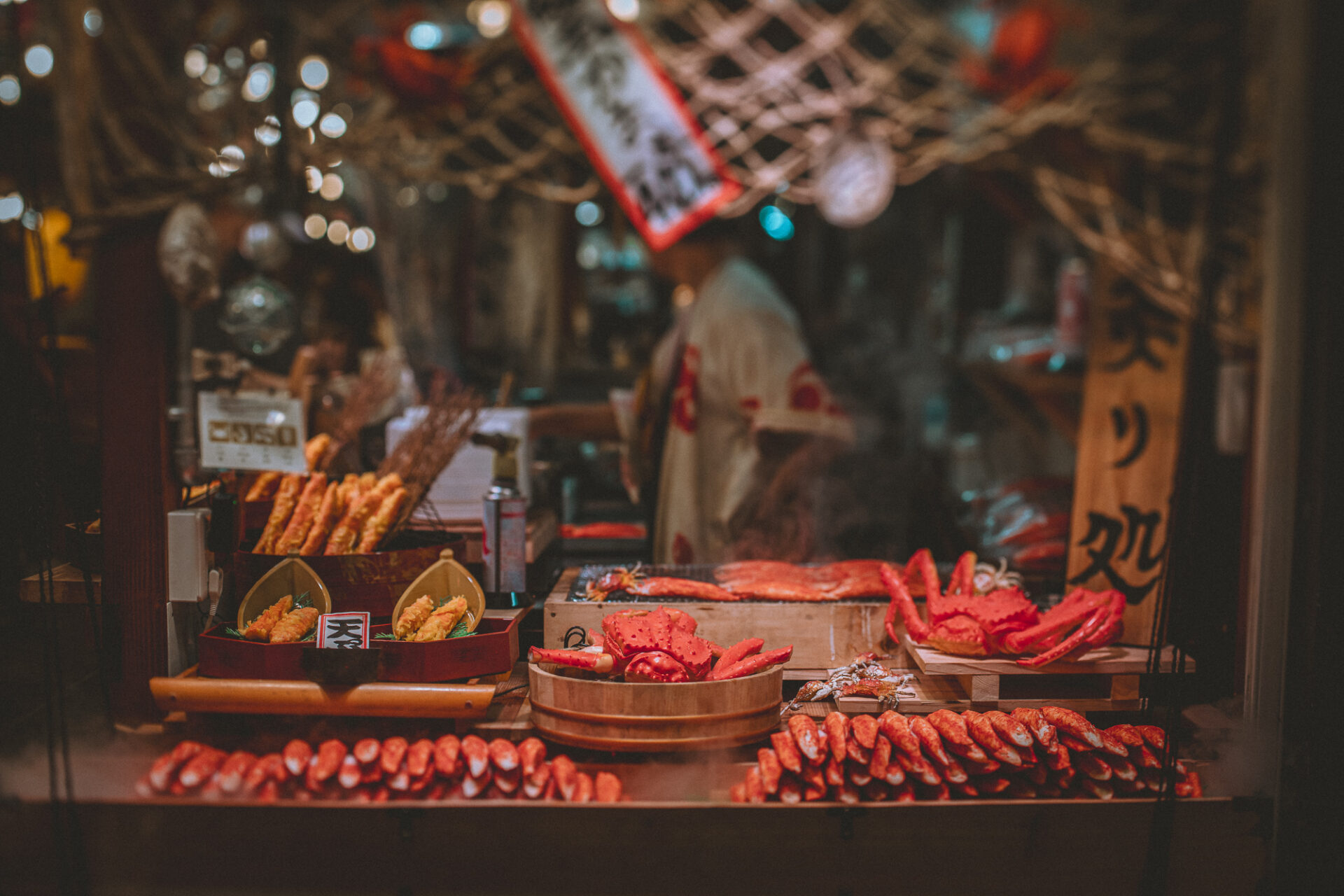

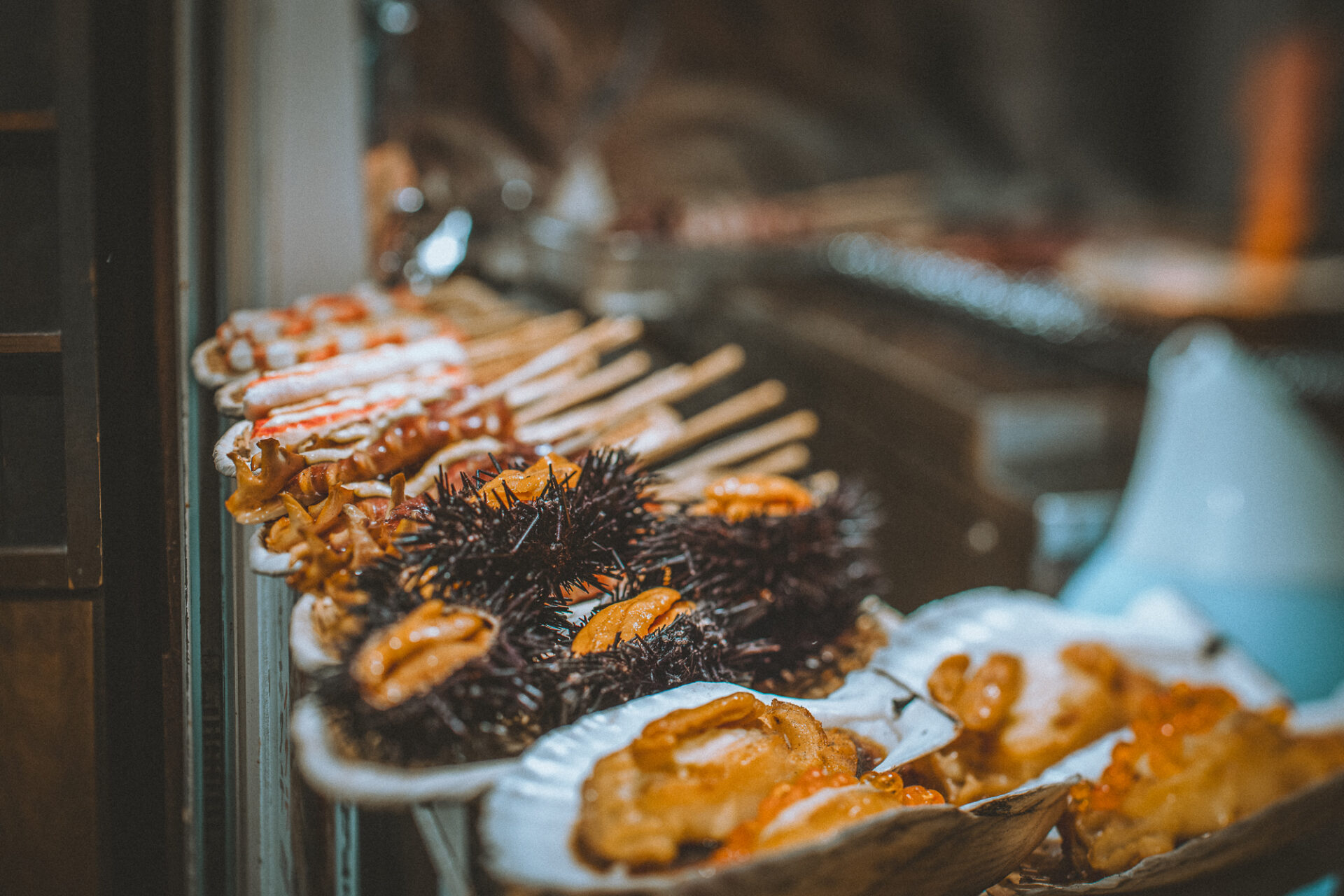

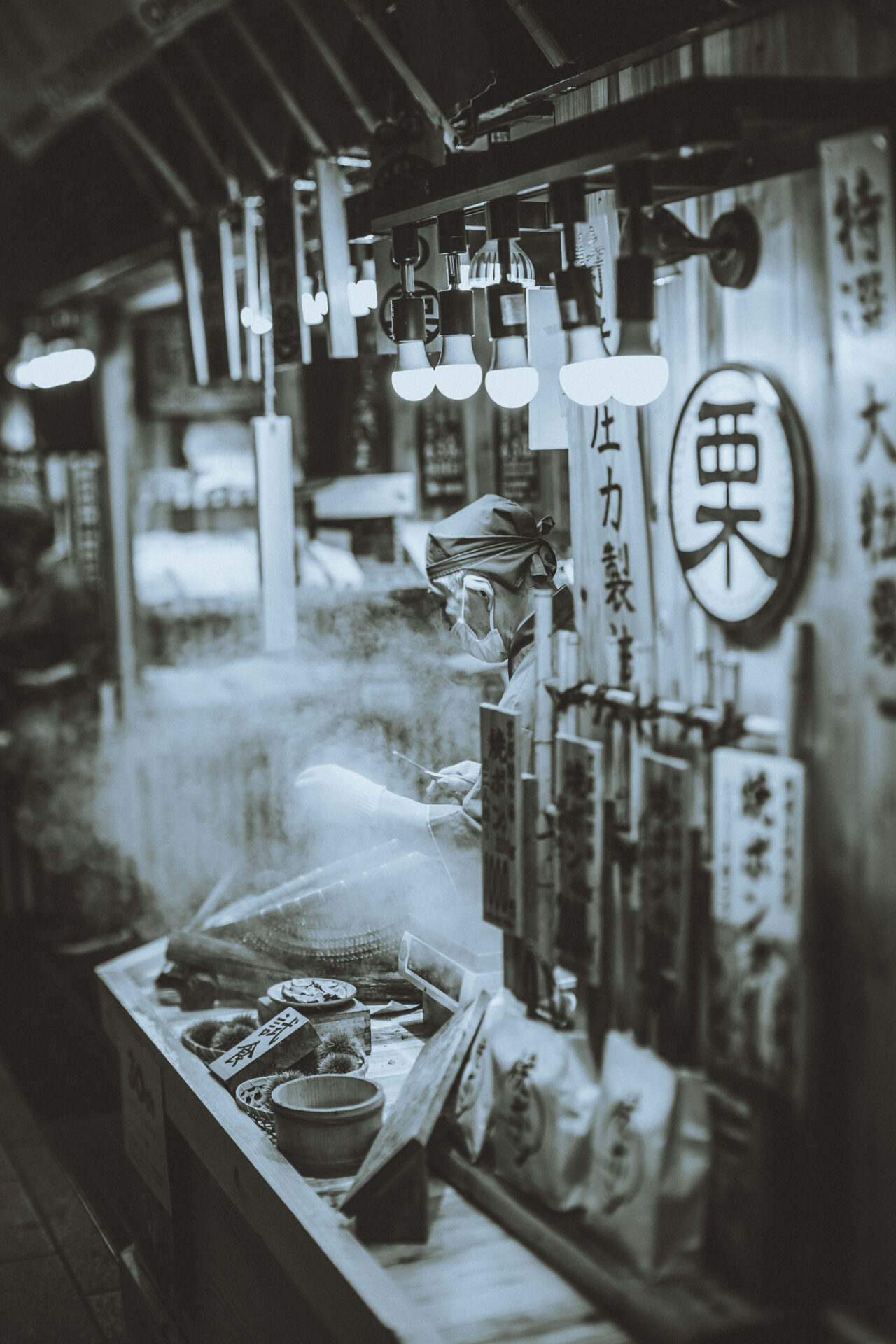
Morning: Shrines and Palaces
Kyoto Imperial Palace
Walk, cycle, and grab a taxi or a subway to reach the Kyoto Imperial Palace. Before the capital was moved from Kyoto to Tokyo, this was the residence of the imperial family until 1868. Located inside the vast Imperial Park, the complex is enclosed by long walls and consists of several gates, halls and gardens.
You can visit the palace grounds either independently or on regular English tours. The grounds are vast and beautiful, but only a few of the rooms are open to the public.
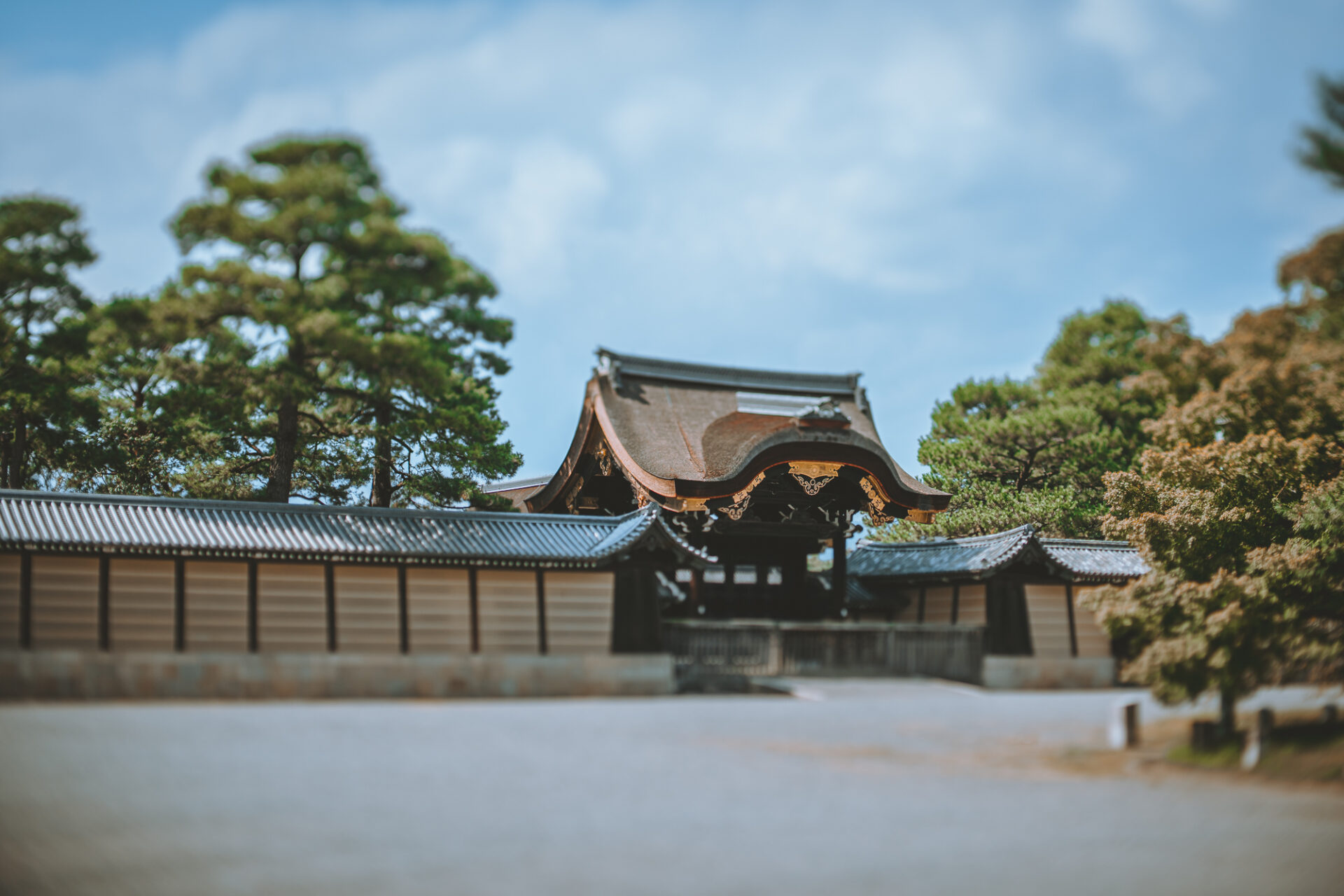
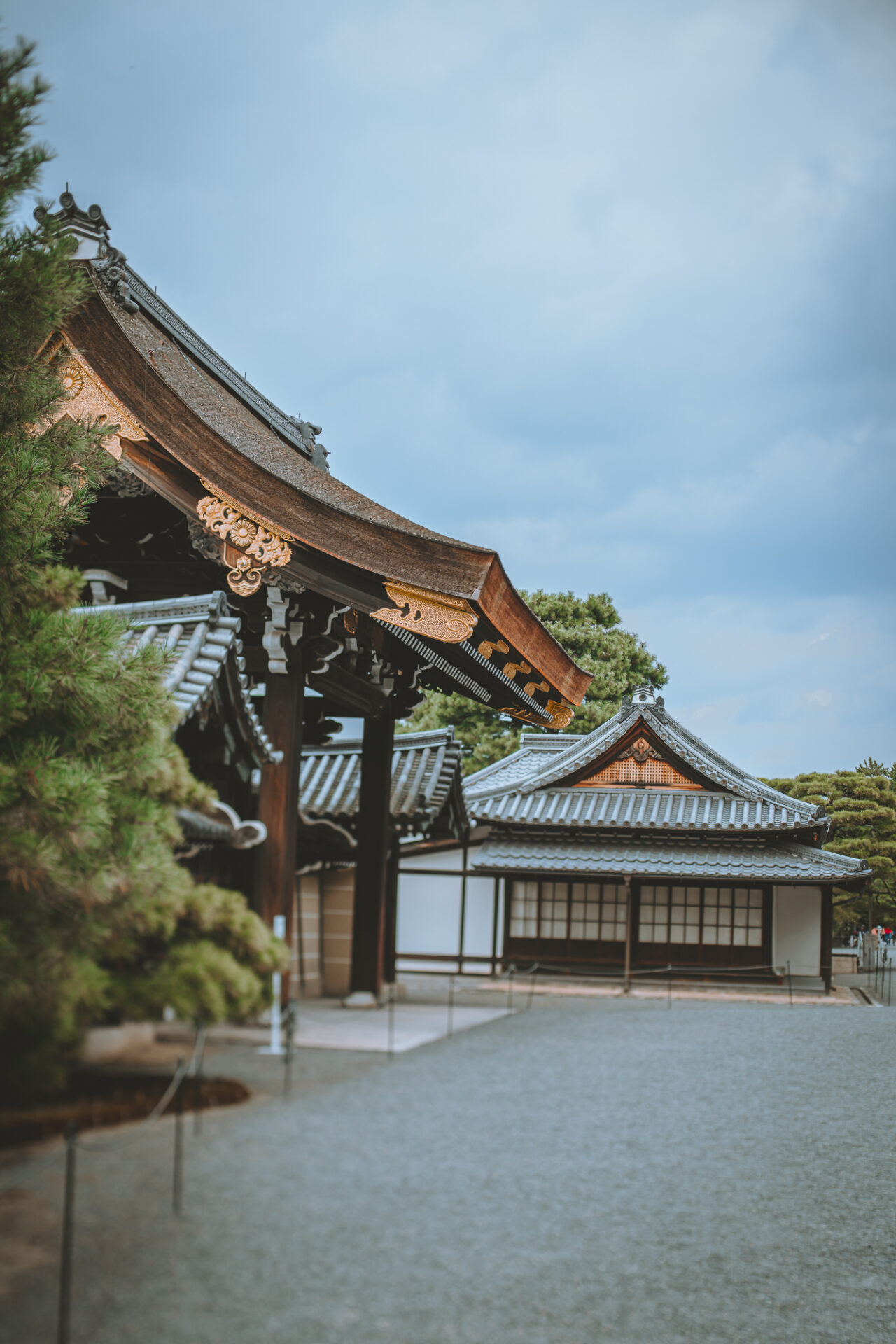
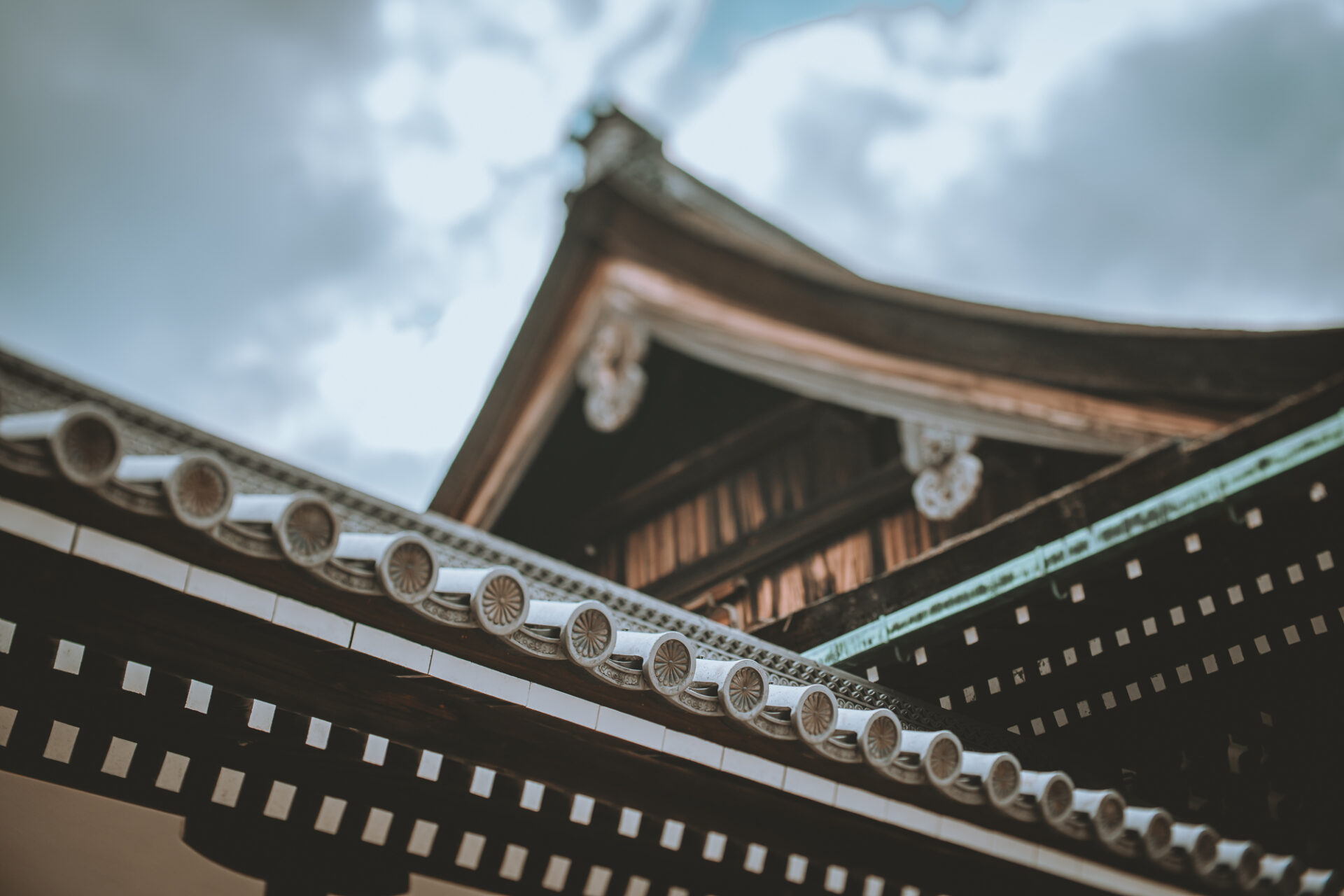
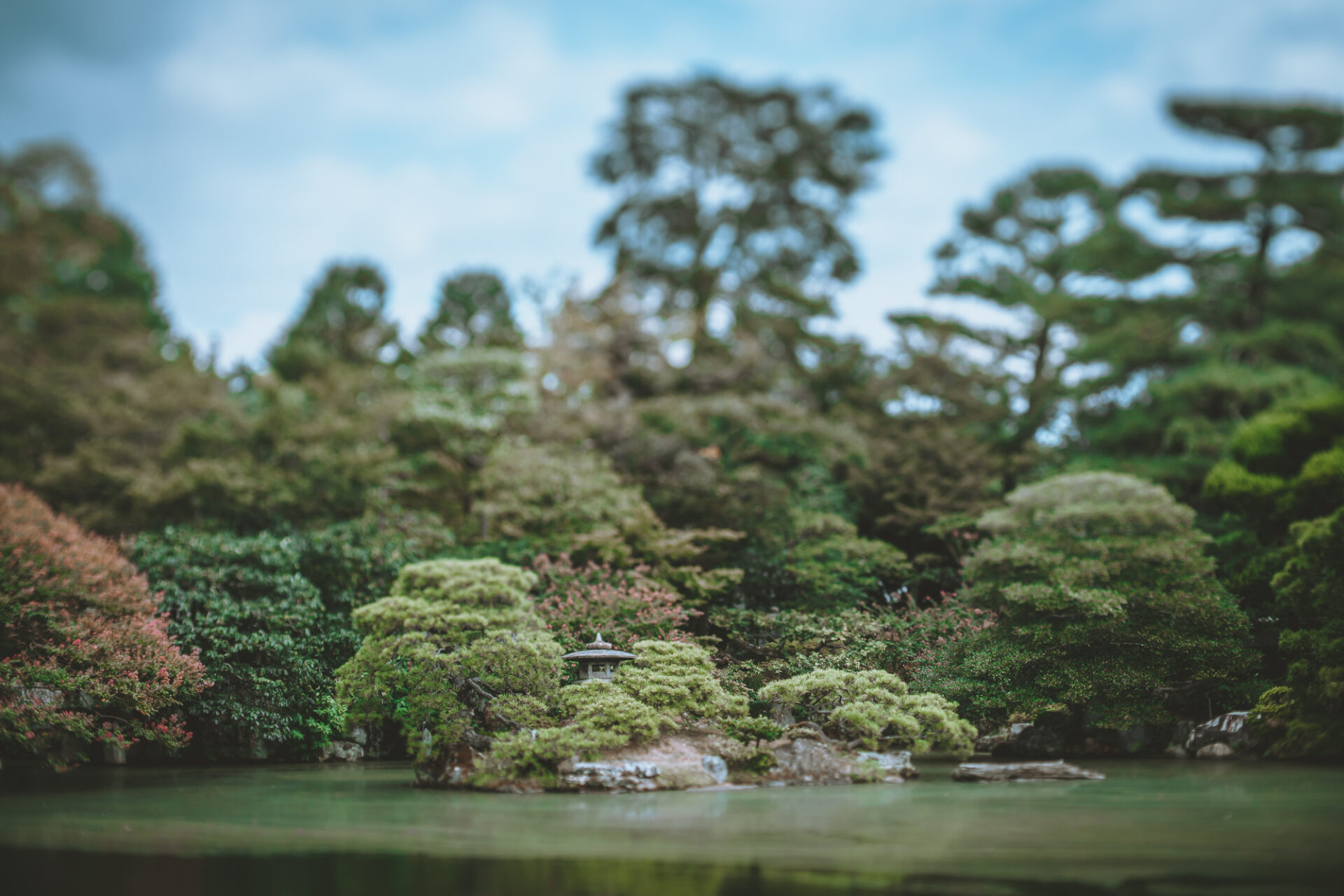
Kinkaku-ji Temple
Head northwest of the palace gardens to Kinkaku-ji Temple, also known as the Golden Pavilion. This Zen Buddhist temple is completely covered in gold leaf and overlooks a large pond and manicured gardens. Kinkakuji inspired the similarly named Ginkakuji (Silver Pavilion), which can be found in Higashiyama district.
It’s burnt down numerous times throughout Japanese history and rebuilt, with the present golden temple complex dating back to 1955. Take the time to explore the temple grounds, including the head priest’s former living quarters (hojo) and the Sekkatei Teahouse.
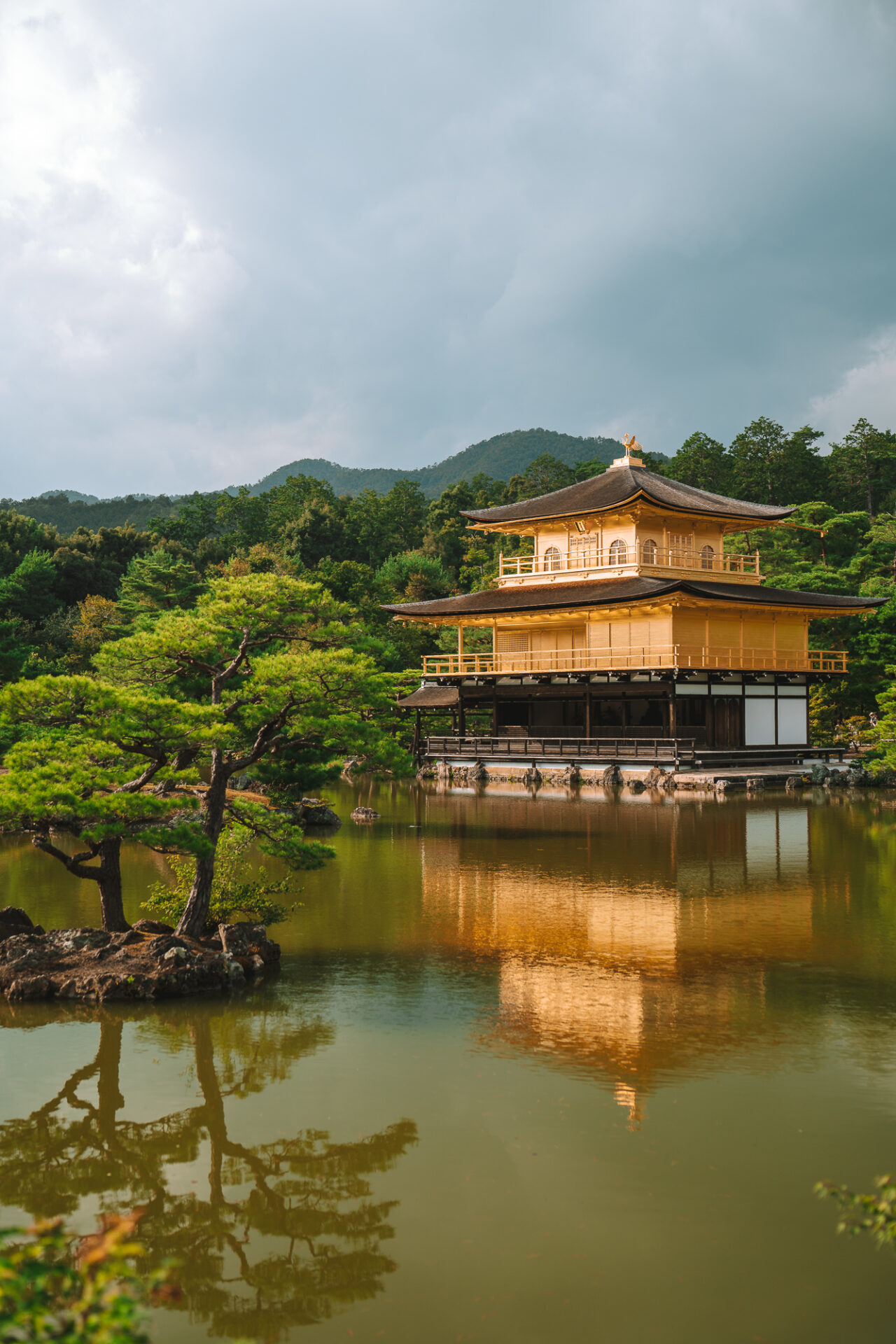
Afternoon: Arashiyama Bamboo Grove
Head west of the city to Arashiyama Bamboo Grove. As one of the city’s most recognizable sights, this is a must-see on your 2 days in Kyoto. You can access it directly from the main street of Arashiyama, a little to the north of the entrance to Tenryu-ji Temple, which you should also visit while you’re in the area.
There’s one main path through the bamboo forest grove, which leads slowly uphill. The thick bamboo encloses the trail on either side, forming incredibly picturesque walls of bamboo that you’ve likely seen on your social media feed. Once you reach the top of the hill, you’ll see the entrance to the Okochi-Sanso Villa right in front of you. This is also a nice place to visit, with beautiful gardens and an incredible view of the city.

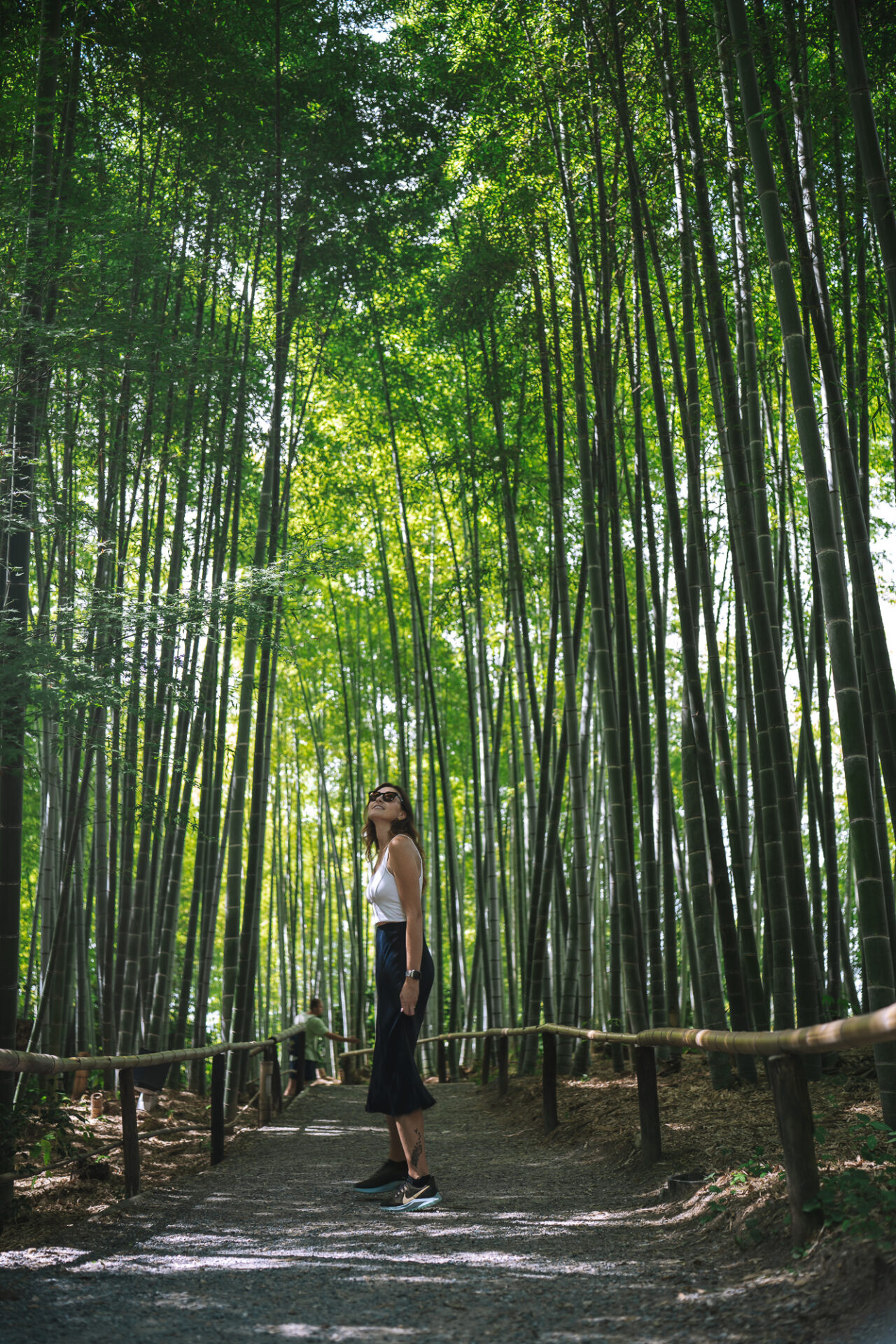
Tenryu-ji
Then, head over to Tenryu-ji, a serene Zen temple featuring teahouses and expansive gardens. It’s the head temple of the Tenryū-ji branch of the Rinzai sect of Zen Buddhism and is also a UNESCO World Heritage Site. It’s especially beautiful in Spring and Fall when the cherry blossoms and Fall foliage come alive.
Sunset: Fushimi Inari Shrine
To finish off this 2 day Kyoto itinerary, we highly recommend a sunset hike to Fushimi Inari Taisha. This is one of the most famous shrines in Kyoto, so it will be busy no matter what time of the day. But, sunset is generally much quieter, and we found that it gets less busy the higher you go up the mountain.
To reach it, take the JR Nara Line and get off at the Fushimi Inari Station.
The shrine is famous for thousands of torii gates, which straddle the trails behind the main temple buildings that lead into the forest of Mount Inari. It’s considered the most important shrine dedicated to Inari, the Shinto god of rice.
Behind the shrine’s main hall is the entrance to the torii gate-covered hiking trail. The pilgrimage to the summit of Mount Inari takes about 1-2 hours (return). If you’re not keen on a long walk at sunset, you can walk up to the Yotsutsuji intersection roughly halfway up the mountain. This spot offers views of the beautiful city of Kyoto and offers a good alternative for those who don’t want to walk up all the way. Don’t worry, the views at the top don’t get better, so you won’t be missing out by not making it to the top.
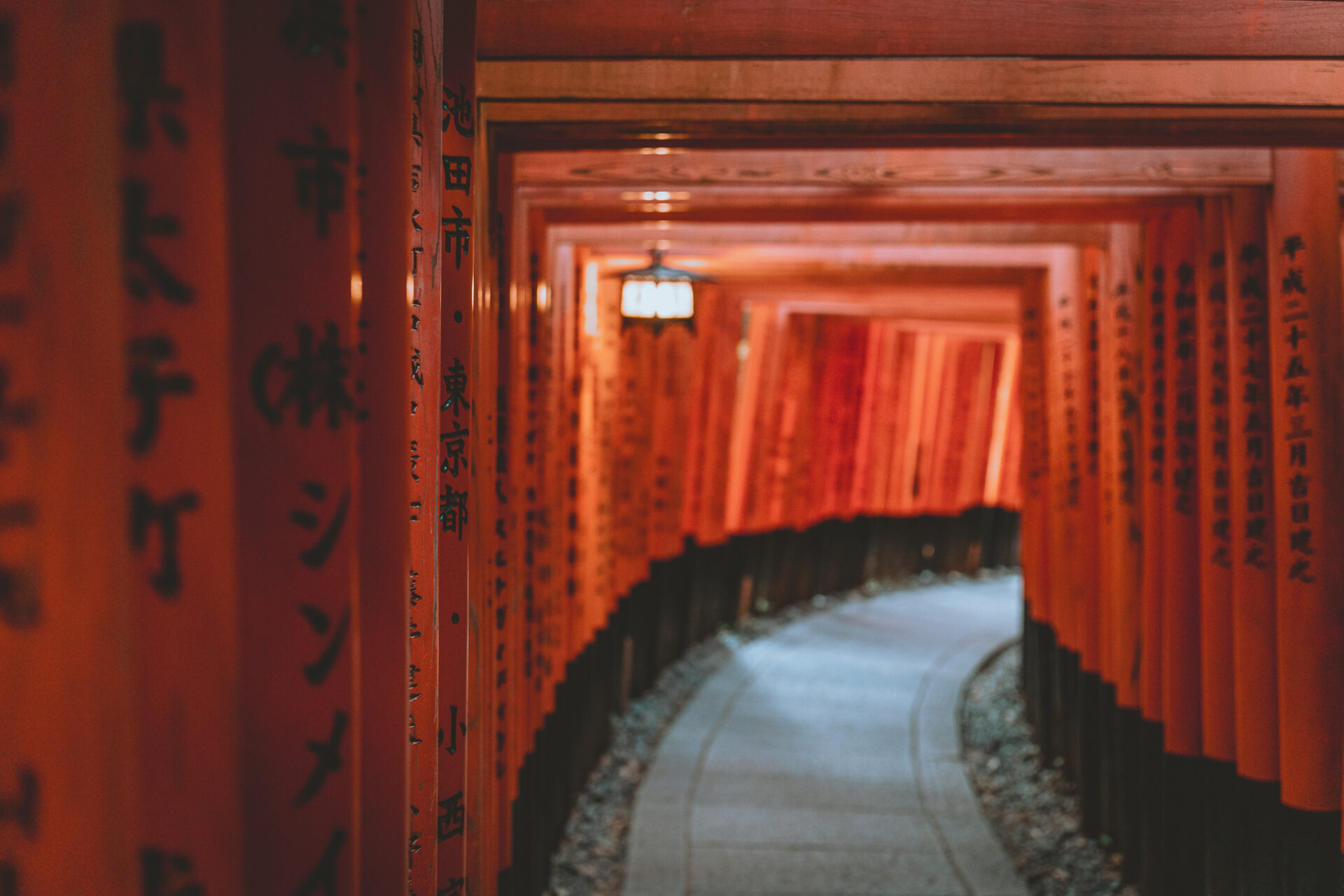

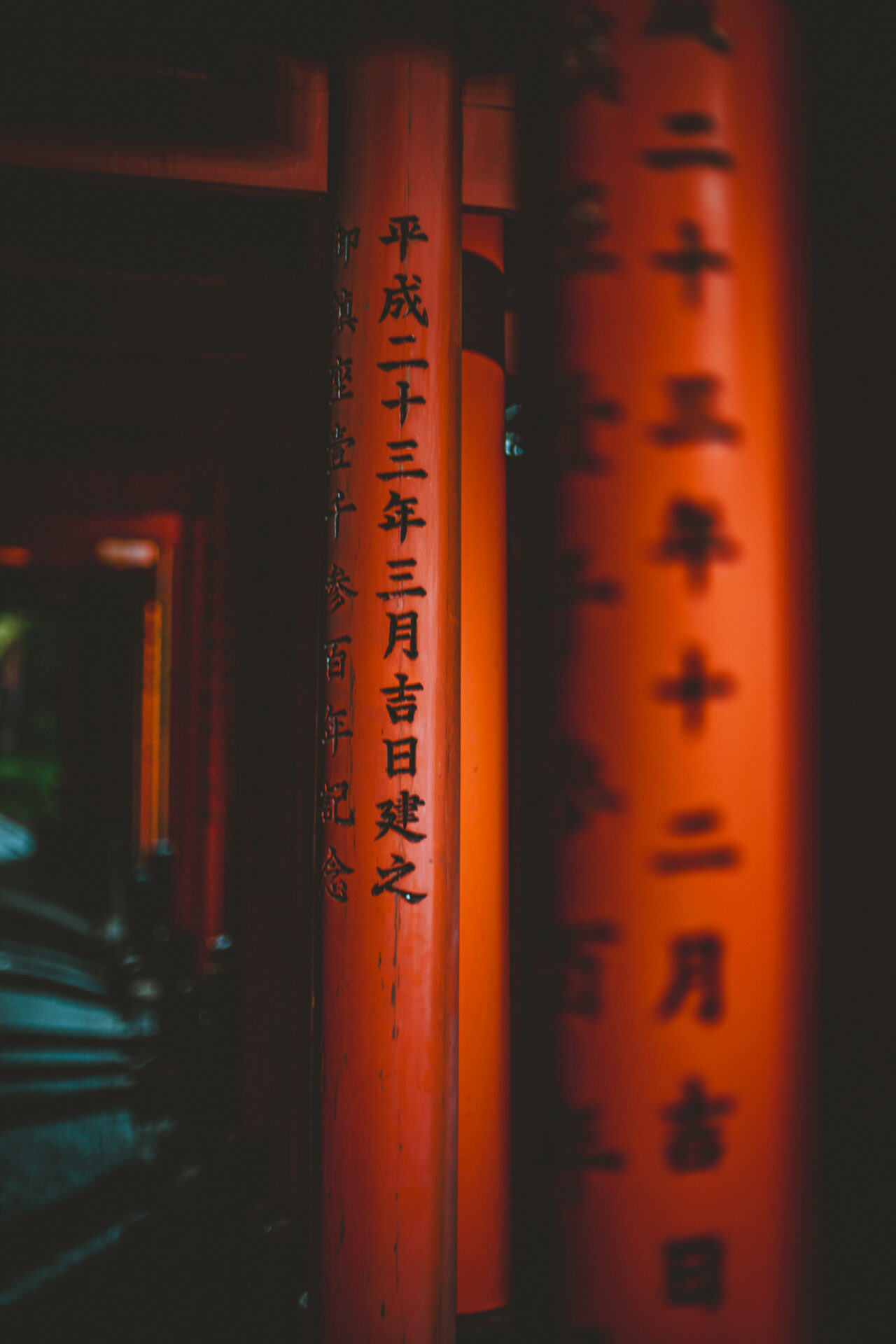
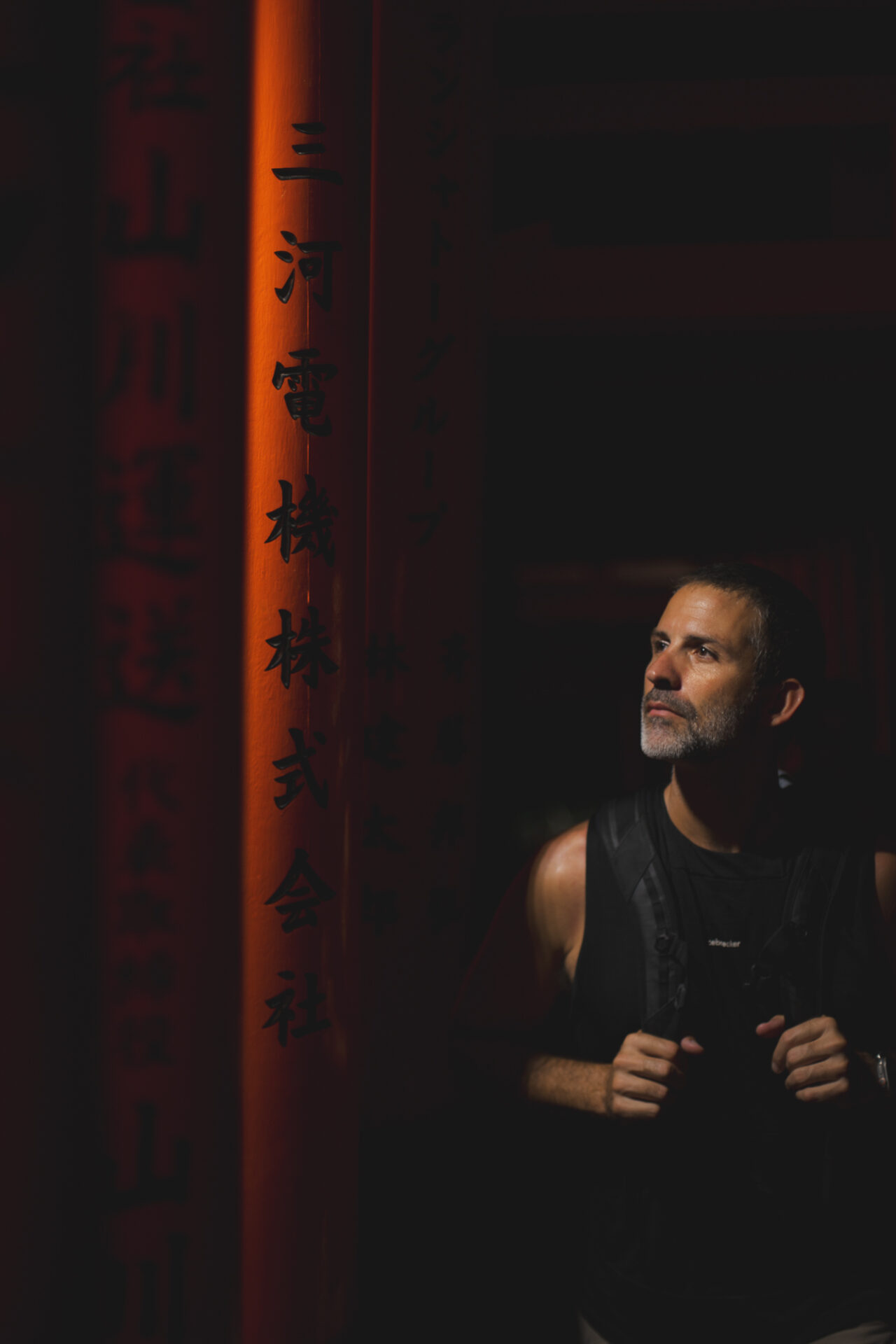
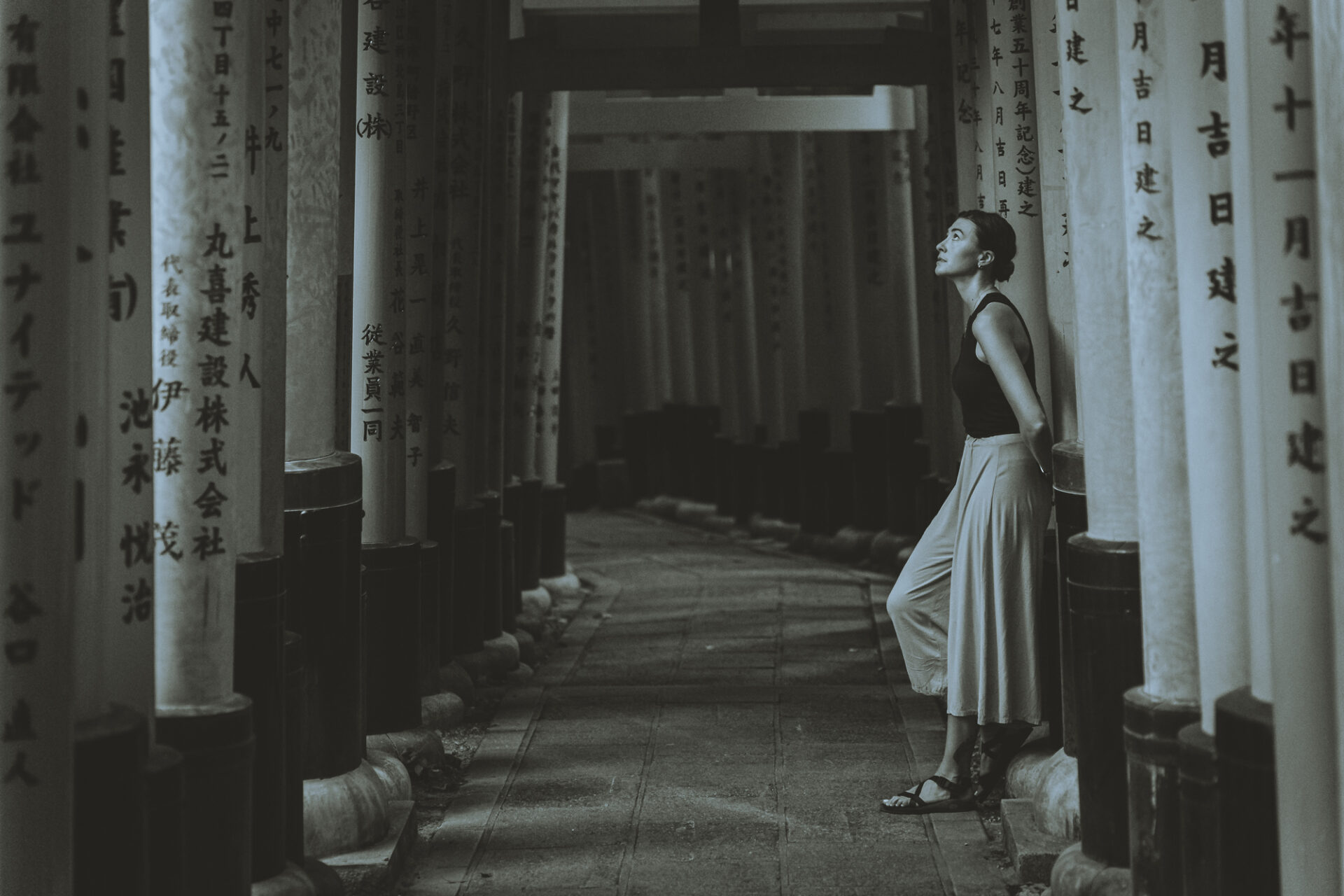
READ NEXT: 2-Week Japan Itinerary: Tokyo, Kyoto, Osaka & More!
Other Things to Do in Kyoto:
If you have more than 2 days in Kyoto, there’s plenty more to add to your itinerary. A few extra days will give you the opportunity to add some traditional food and drink experiences and cultural activities to your list.
Here are some recommendations to fill in your time for 3+ days in the city.
Gekkeikan Okura Sake Museum
For foodie travellers, this brewery and museum tour in Kyoto is a great way to dive into the traditional sake culture. This tour includes an introduction to sake making and a guided tasting paired with traditional Japanese snacks.
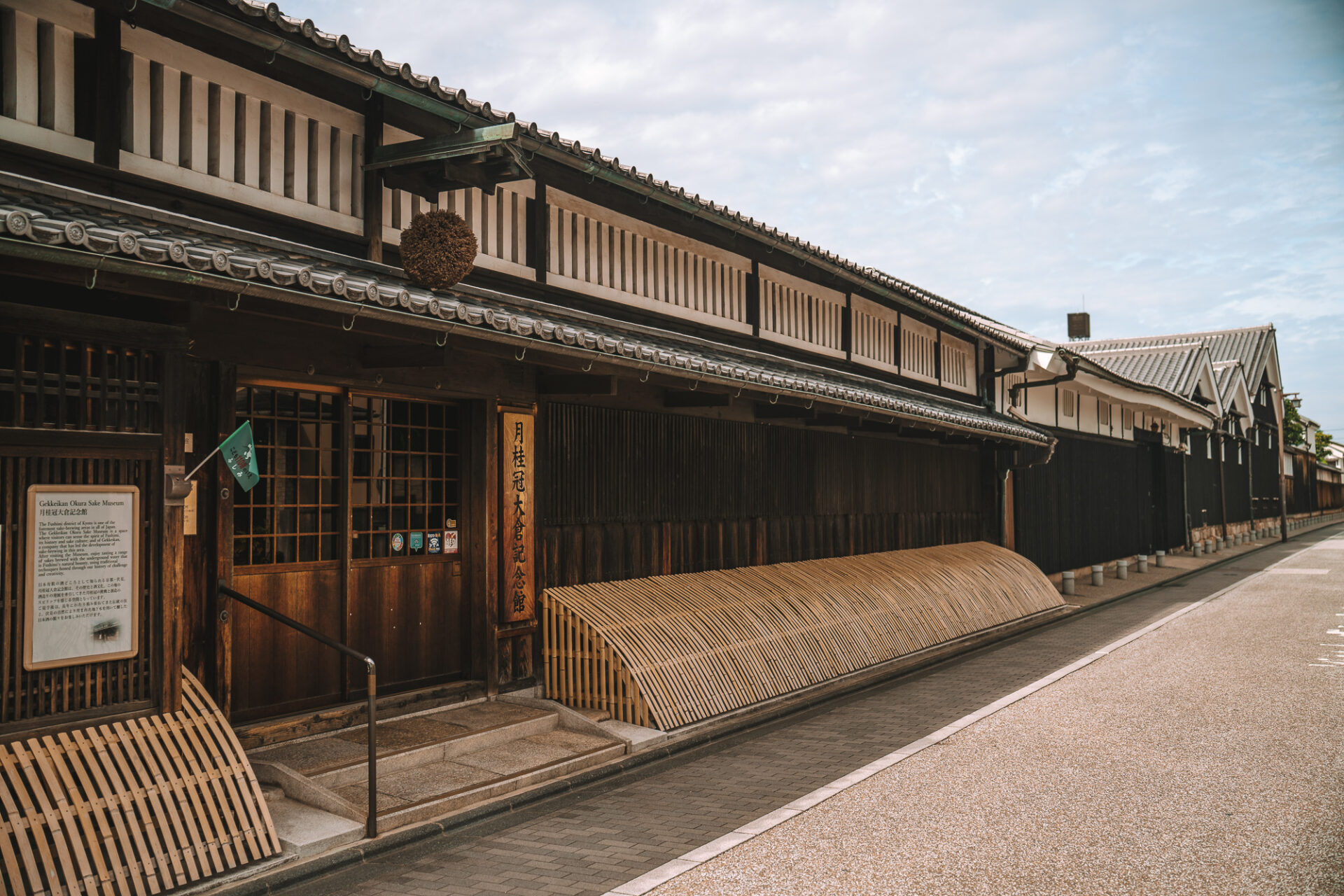
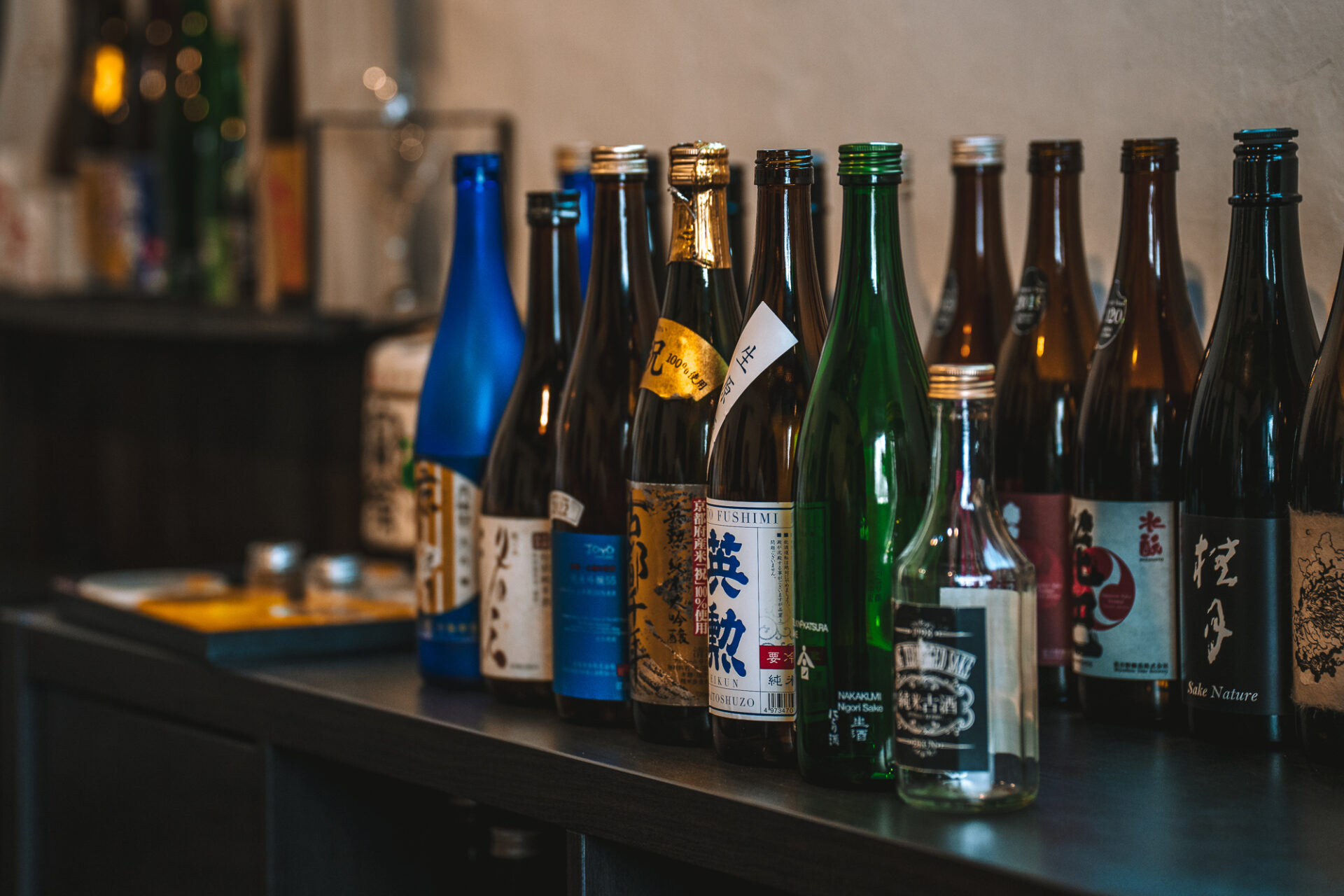
Explore Fushimi Sake Village
The Fushimi Sake District is a traditional sake brewing district along the Horikawa River in southern Kyoto. Home to nearly 40 sake breweries, it’s the perfect place to delve into the culture of sake. A few of the breweries are open to the public, and some shops offer a chance to taste and purchase their products, as well as have a bite to eat.
Samurai and Ninja Museum
Located right in downtown Kyoto, the Samurai and Ninja Museum is a fun activity for those who are travelling with kids. The museum features Edo-period armour and sword displays, along with family-friendly instructions on warrior skills. Visitors can dress up as samurai, throw ninja stars, use a blow gun and try archery.
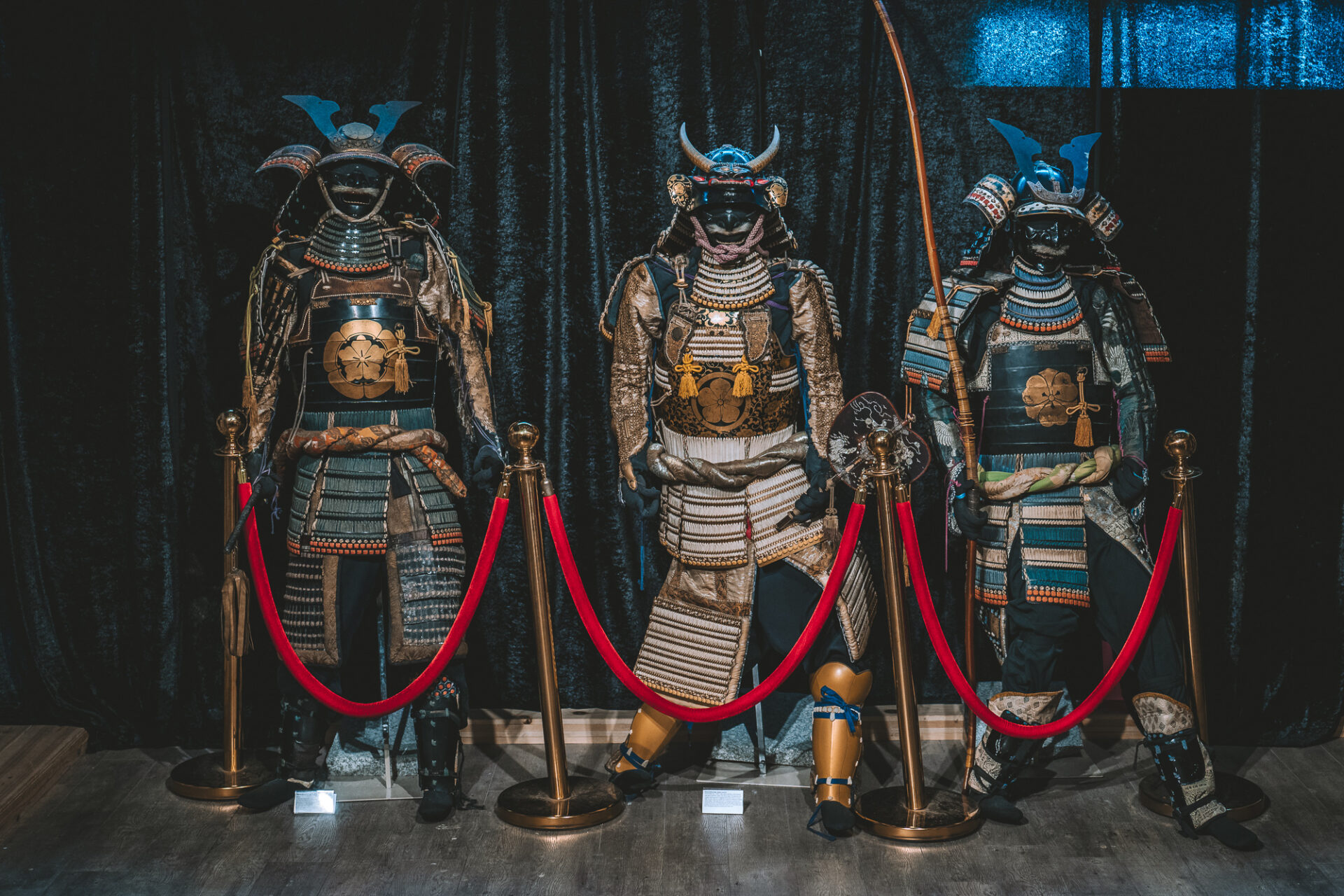
Looking for a more authentic samurai experience? Head to Kuma Valley!
Traditional Tea Ceremony
A traditional tea ceremony is an essential experience for any tea lover in Kyoto. Learn about the ancient ritual in one of the traditional teahouses dotted around the city, learn to make matcha, and taste it paired with various sweets and snacks.
You can try this Tea Ceremony and Machiya Townhouse Tour or Traditional Tea Ceremony at Jotokuji Temple for a wonderful experience during your Kyoto itinerary.
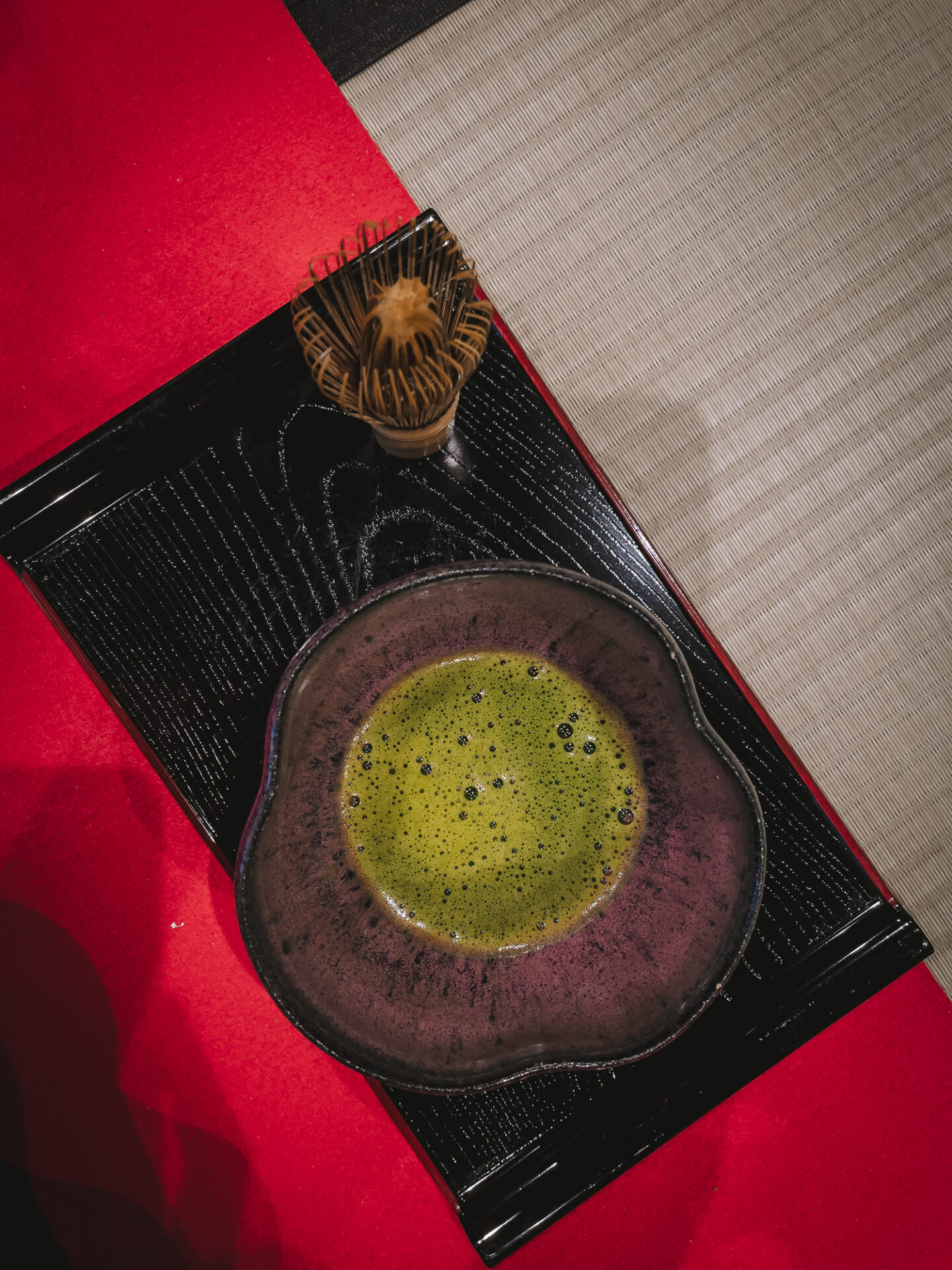
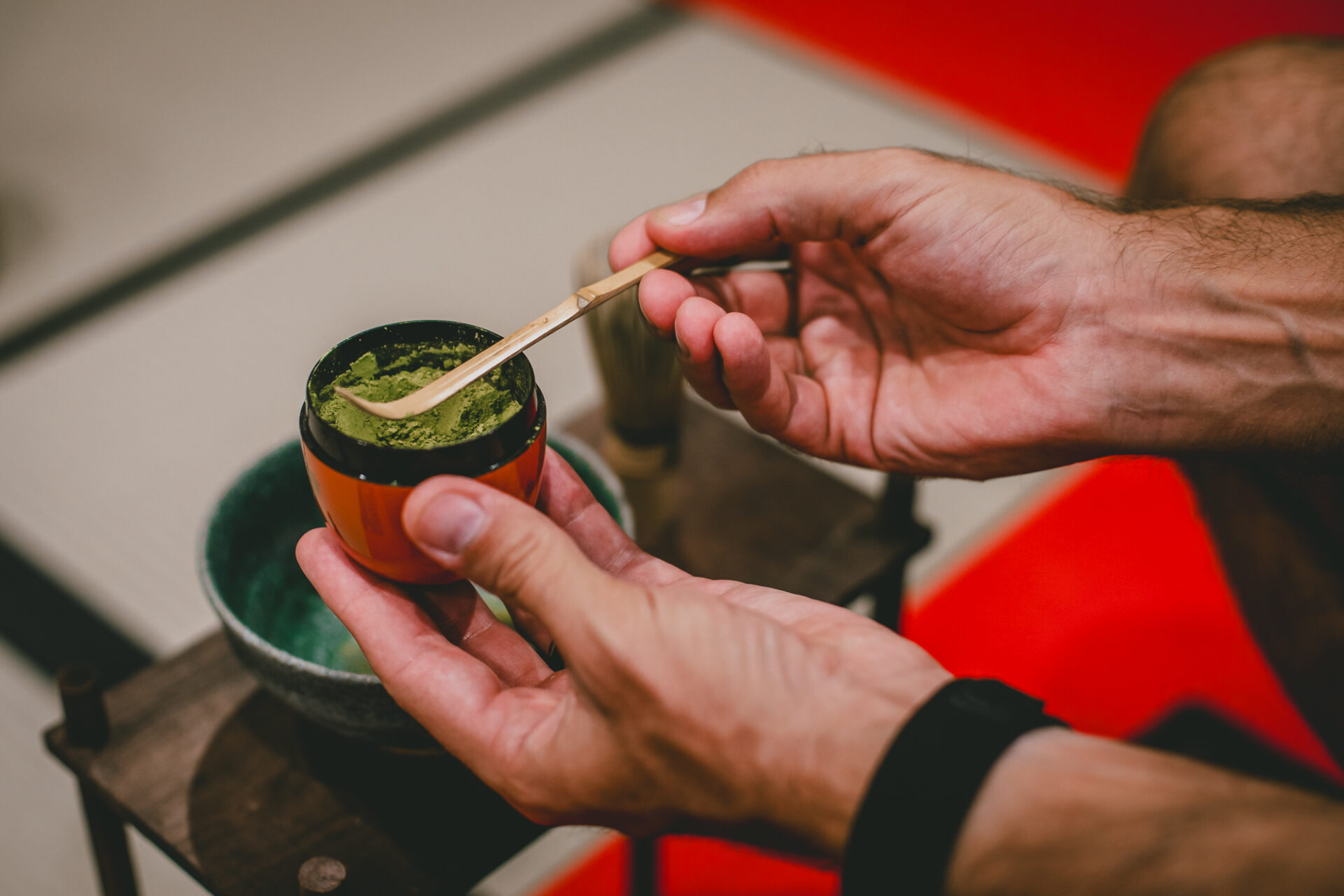
Ryōan-ji Temple
Located not far from Kinkaku-ji Temple or Golden Pavilion, this 15th-century Buddhist temple and UNESCO World Heritage Site is also worth a visit. It’s home to one of Japan’s most famous rock gardens, along with some gentle walking paths beside a pond and the temple’s main buildings.
Kyoto Tower
If you have some spare time on your two days in Kyoto, head to Kyoto Tower, an observation tower right in the center of the city near Kyoto Station. The steel tower is the tallest structure in Kyoto, with its observation deck at 100 meters (330 ft) and its spire at 131 meters (425 ft).
You can admire panoramic views from the top and even enjoy a romantic dinner at Kyoto Tower Restaurant. Last admission to the observation deck is 8.30pm, so we recommend visiting in the evening around sunset time.
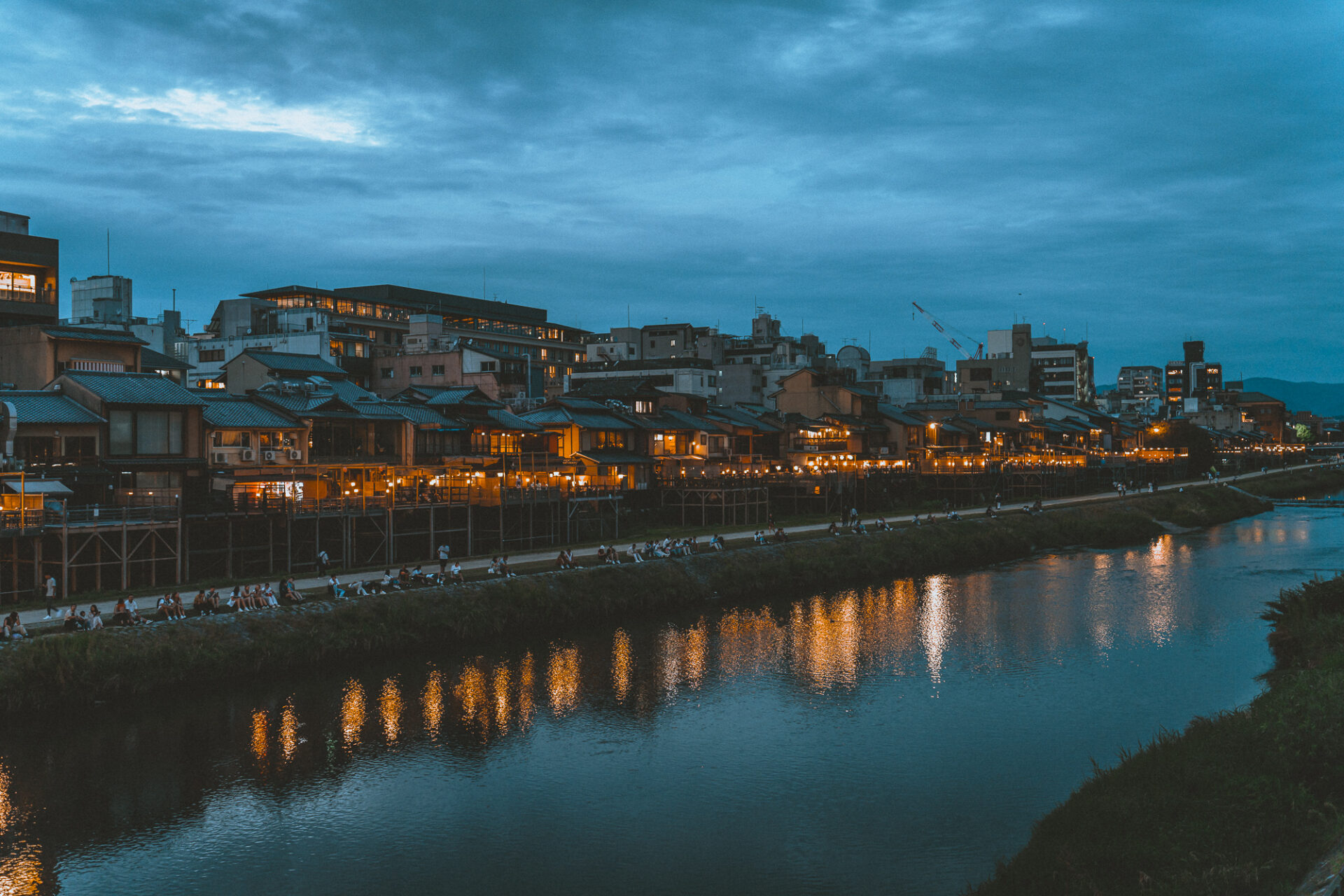
READ NEXT: Fun Things to do in Osaka, Japan

